


Eman Abdalla, global operations director of Cargill Ocean Transportation, on building more resilience into the maritime transport chain
Driving the winds of Change
Official membership magazine of Providing thought leadership on the role of ports in a connected world Vol 69 No 3 May/June 2024 IAPHworldports.org Eastern Europe Moving on after Ukraine Concession trends Tracking global port patterns Energy hubs Concentration of power
Gothenburg Port Authority and calling at the port.

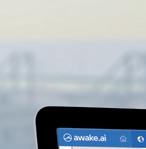



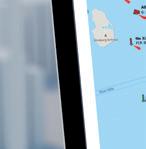



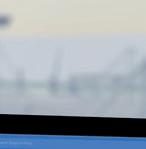
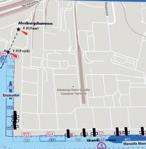
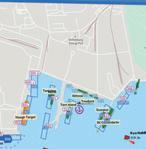
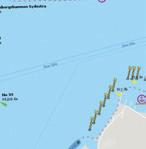
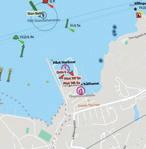
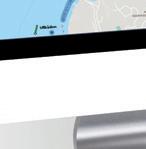

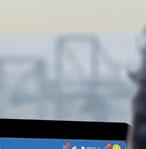



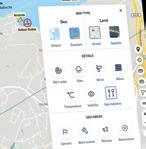



“Today, there are numerous contacts that need to be made for a ship to arrive at berth, to load and unload, and then uncertainty. Digital Port Call consolidates evident. This is a digital tool that many Rauer, Manager of Port Control at the Port
level by sharing of data from all relevant is then collected to the Digital Port Call to the port calls and geofence areas of Just-in-Time Planning & emissions, reduces costs, improves safety,
Naturally this needs the Shipping Lines /
at the port. and this results in a Just-in-Time call. The there is for example a vessel arriving earlier
Once the port call is completed the
Emissions and Planning accuracy. System
berths, ship types and names. Emissions can be analyzed and reported per vessel,
sales@awake.ai About Awake.AI are focused on developing customized












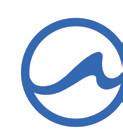




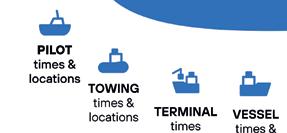


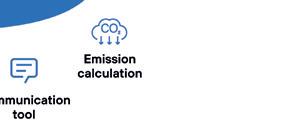







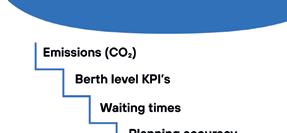
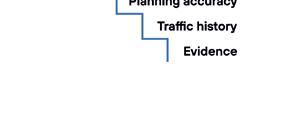



2
ADVERTISEMENT FEATURE
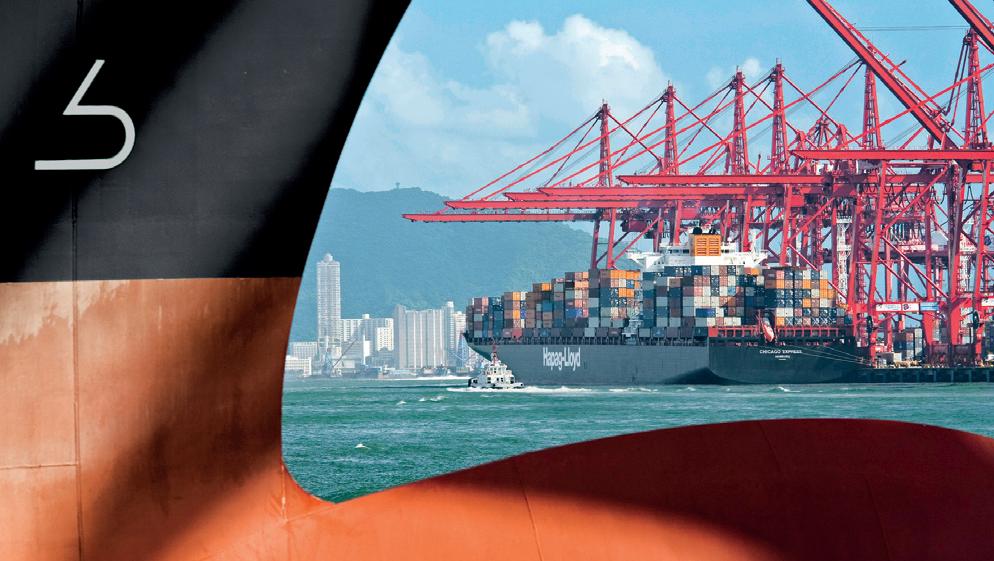
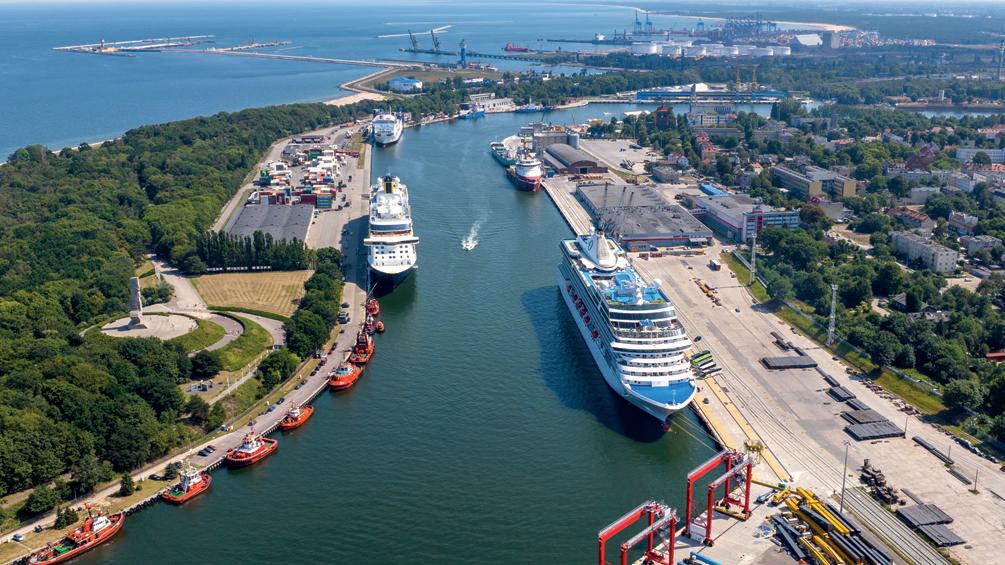










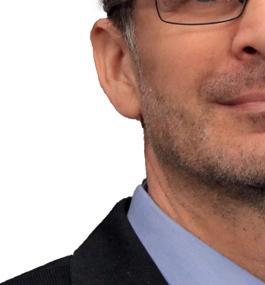


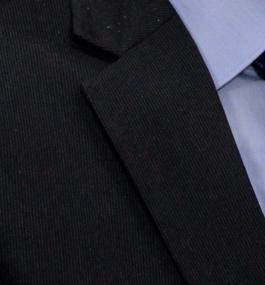


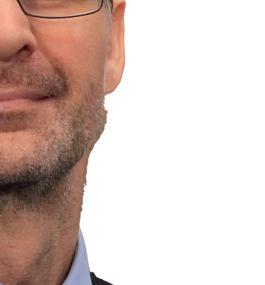






1 Vol 69 ǀ No 3 ǀ 2024 CONTENTS 2 Editor’s Comment& Contributors Stability and resilience in a time of rapid change 4 In Conversation With Eman Abdalla, Cargill Ocean Transportation Eman and Patrick Verhoeven, IAPH managing director, talk supply chains 8 Concession Trends Industry players are once again more active in port deal-making 12 Regional focus: India Building capacity in the world’s most populous country 14 Wake-Up Call India: an analysis 15 Closing The Gaps AECOM’s Lee Buttaci on building the ports of tomorrow 16 World Ports Tracker Q4 Update Port trends analysis using multiple data sources 22 The Column: Digitalisation Digitalisation strategy needed 24 Eastern Europe Ports pivot to new business after Ukraine conflict 28 Lookout Francis Scott Key Bridge collapse 30 Energy Hubs Ports gear up for future fuels challenge 32 Sustainable Futures Kari-Pekka Laaksonen, Group CEO, Samskip 35 Quick 10 Naomi Vanderstockt, Officers on Watch 36 View From The Stern Captain Brian Jones 38 IAPH Info News and events from your association 40 The Review The Geography of Transport Systems 10 24 28 30 utures nen, Group Samskip kt, e es rom ms 40
Providing thought leadership on the role of ports in a connected world
EDITORIAL & CONTENT
Editor: Martin Clark mclark@mercatormedia.com
Features Editor: Felicity Landon
Publisher
Dr. Masahiko Furuichi IAPH Secretary General info@iaphworldports.org
Dr. Patrick Verhoeven
IAPH Managing Director patrick.verhoeven@iaphworldports.org
Regular Correspondents: Felicity Landon; Ben Hackett Andrew Penfold; Vladislav Vorotnikov
Production David Blake, Paul Dunnington production@mercatormedia.com
SALES & MARKETING
t +44 1329 825335 f +44 1329 550192
Marketing marketing@mercatormedia.com
Chief Executive: Andrew Webster awebster@mercatormedia.com
Ports & Harbor magazine is produced and edited bi-monthly by Mercator Media Limited, Spinnaker House, Waterside Gardens, Fareham, Hants PO16 8SD UK
t +44 1329 825335 f +44 1329 550192 info@mercatormedia.com www.mercatormedia.com
Subscriptions INTERNATIONAL ASSOCIATION OF PORTS AND HARBORS
IAPH members enjoy a free subscription to P&H. If your organisation is not a member and you would like a paying subscription to the magazine, please contact the IAPH for more information at: 7th Floor, South Tower, New Pier Takeshiba 1-16-1 Kaigan, Minato-ku Tokyo 105-0022, Japan
T: +81 (0) 3-5403-2770
F: +81 (0) 3-5403-7651
E: ph@iaphworldports.org
W: www.iaphworldports.org
©Mercator Media Limited 2024. ISSN 1740-2638 (print) ISSN 2633-4232 (online).
Ports & Harbor is a trade mark of Mercator Media Ltd. All rights reserved. No part of this magazine can be reproduced without the written consent of Mercator Media Ltd. Registered in England Company Number 2427909. Registered office: c/o Spinnaker House, Waterside Gardens, Fareham, Hampshire, PO16 8SD, UK.

EDITOR’S COMMENT
 MARTIN CLARK Editor
MARTIN CLARK Editor
Stability in an uncertain time
CONTRIBUTORS
 MIKE MUNDY Editor & Independent Analyst
MIKE MUNDY Editor & Independent Analyst
Mike Mundy is a well-known commentator and independent analyst of the global maritime sector. He has edited a number of prestigious publications and worked in a consultancy capacity with leading port sector businesses. :
Heightened volatility around the world — with conflicts raging in the Middle East, Ukraine and the spectre of flare-ups elsewhere — has thrown a spotlight on the role and importance of global supply chains as never before.
Recent disruptions to shipping in the Red Sea and the Strait of Hormuz, and with all the challenges of moving grain shipments out of Ukraine still fresh in the mind, the maritime sector is now front-page news all too often. The collapse of Francis Scott Key Bridge in Baltimore after it was struck by a cargo ship at the end of March went viral on social media the world over.
According to OECD figures, as much as 90% of traded goods are shipped by sea. These vessels critically depend on ports. It places the industry at the cusp of geopolitical fault lines that are not only shifting, but accelerating, as new cracks and divisions emerge, and as the global economy seemingly realigns.
This includes a growth in non-dollarised trade volumes as countries forge new alliances away from the US and the dollar, the traditional currency of choice. The advance of digital tools and other sophisticated technologies, including AI, coupled with an energy transition that will take decades or longer to play out, further compound the uncertainties overhanging the industry.
This complex mesh of moving parts means the ports sector is unlikely to escape a similar level of scrutiny as the shipping world— and nor should it. Given its unique role in facilitating world trade, the ports industry must face up to the same hard edges that other elements of the global supply chain are currently grappling with.
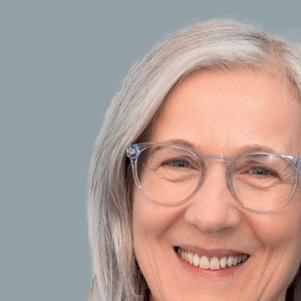


FELICITY LANDON
Freelance journalist
Award-winning journalist Felicity Landon is a well-known figure in maritime circles, with the depth of knowledge and network of contacts to prove it. Felicity is versatile in her areas of coverage, with these spanning the container, dry and liquid bulk, cargo handling, energy and diverse other subject areas. :
Resilience will be a part of the toolkit that helps ports and shipping companies navigate through these uncertain times. The ability of ports across Eastern Europe to transition to new business areas in the wake of the conflict in Ukraine, a topic we explore in detail in this issue, highlights a great level of flexibility and responsiveness, traits that will serve the industry well going forward.
Collaboration is another area where the industry can come together to forge a stronger partnership. Again, in this issue, we are delighted to feature Eman Abdalla, global operations director of Cargill Ocean Transportation, who remarks that closer collaboration between the shipping world and the ports sector can improve efficiencies all round, building out greater resiliency throughout the global supply chain.
It means despite a concerning backdrop of events taking place around the globe, many of the challenges faced by the ports sector can still be viewed through a somewhat positive lens.
While insurers may struggle to calculate the risks and exposure required in such an uncertain and volatile market, there remains a stoic responsibility among ports industry professionals to be there for the maritime industry, to help play a role in maintaining stability in the supply chain, and to meet the new challenges and changes as they come.
The IAPH, after almost 70 years, offers a platform to enable this. Indeed, this is an industry that has been tasked before with challenges and, by and large, has passed each and every time. Experience still counts for a lot even in the quick-moving times of 2024. :









VLAD VOROTNIKOV
Freelance journalist
Vlad Vorotnikov is an international journalist specialising in coverage of the energy, agriculture and transport services markets. He holds a master’s degree in journalism and specialises in covering Eastern Europe and Asia. Based in Georgia, he has been contributing to Ports & Harbors since 2018. :
3
IN CONVERSATION WITH EMAN ABDALLA
Navigating a new era
Eman Abdalla is global operations director of Cargill Ocean Transportation, one of IAPH’s newest associate members. A part of the Cargill family of companies, it is actively supporting sustainability in shipping, most recently with the high-profile WindWings project, deploying large solid-wing sails on the Pyxis Ocean vessel to deliver double-digit emissions savings. Here, she talks with IAPH managing director Patrick Verhoeven about how industry, shipping and the ports sector can work more closely to accelerate decarbonisation targets and achieve greater efficiencies

Q : Q:
Eman (E), can you give a brief overview of Cargill’s global operations?
E: Cargill is a family company committed to providing food, ingredients, agricultural solutions and industrial products to nourish the world in a safe, responsible and sustainable way. It has a proud legacy. Founded in 1865 by William Wallace on the belief that 'our word is our bond’, it's a tenet that remains at the heart of how we operate today. Across five business enterprises — Agricultural Supply Chain, Animal Nutrition and Health, Protein & Salt, Food and Bioindustrial and Financial Services and Metals — we source raw materials and make and deliver products that are vital for modern living. Through Cargill Ocean Transportation — which sits within our Agricultural Supply Chain enterprise — the company is embedded right at the heart of the supply chain. In total, Cargill has more than 160,000 team members, working in 70 countries and selling to 125 markets worldwide.
Q: Where does Cargill Ocean Transportation fit in?
E: While Cargill Ocean Transportation does not own ships, we do charter around 700 vessels worldwide at any one time and in 2023 we moved around 217 million tons of dry and wet cargo. We also own multiple terminals at ports across the globe. Some of these terminals are 100% owned by Cargill, others are shared with partners. The ones that we own are generally there to serve the business, particularly for our agriproducts, but in terms of our fleet, we only lease vessels on time charter.
Q: How do you view the current world food supply situation?
E: Disruptions are always going to arise. As a 159-year-old company, we’ve found ways to navigate everything from world wars to economic recessions. It’s our job to keep the world fed, no matter the challenges the world faces. Right now, the world is facing some big challenges: a rapidly growing population, a changing climate, a volatile market, almost constant disruption, and over 780 million people going to bed every night without food. We know solutions to these challenges, and so many others, can be rooted in the problem-solving power of agriculture. And we learned during covid that the food system is resilient because the people who show up every day to grow, move and manufacture our food are incredibly resilient; we owe them our thanks and continued support. As we continue to navigate a volatile marketplace, we also need to evolve global supply chains, invest in better infrastructure to support a strong food system, and drive innovation and technology to help us work smarter, faster and more sustainably. After a long period of peace, stability and prosperity globally, it seems we are going back to a lot of instability where there are even attempts to weaponise food supplies — that is something that we are completely against. We help to mitigate supply chain and geopolitical disruptions. Food should never be used as a weapon. Food is a basic human right and we’re doing our part to make sure that it is accessible to everybody.
4
MARTIN CLARK

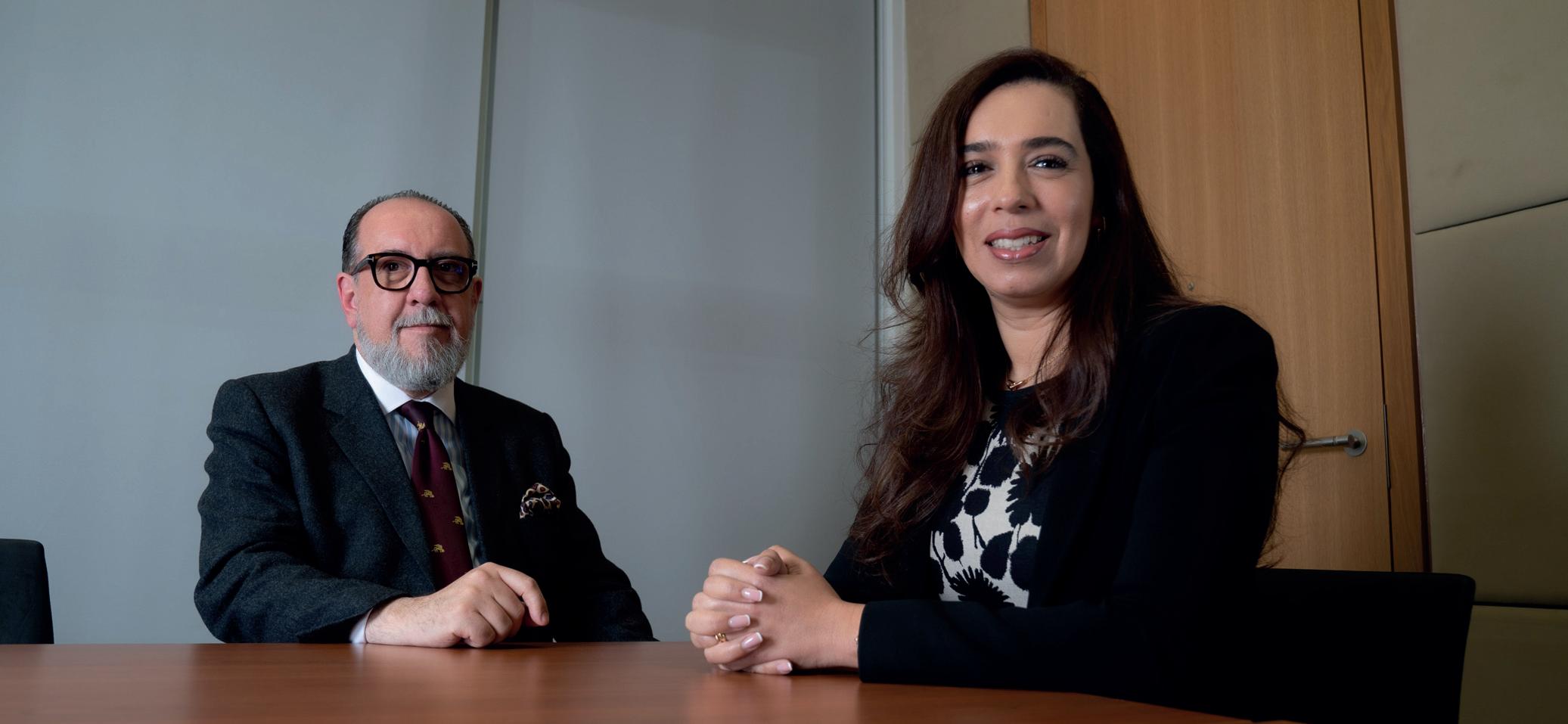
Patrick (P): Continuous disruptions in supply chains seems to be a given now — when one crisis is finished a new one emerges. I think we enjoyed a relatively long period of stability but now we seem to be in an opposite environment. IAPH was actually founded as an initiative of Japan and the United States after World War Two, based on the philosophy that world peace is enabled through world trade — that became our original motto and I think we should revive it because it’s more relevant than ever. Of course, for world trade you need world ports. And in a year of elections around the world, with some countries proposing more inward-looking policies, what does that mean if big powerful navies, like the US for instance, no longer have a mandate to patrol the seas and ensure safe navigation? What does that mean for freedom of navigation and for maritime trade? We are potentially entering a dangerous and uncertain era when it comes to international trade, of which 80% is maritime.
Q: What work is Cargill doing in sustainable shipping?
E: Working with partner BAR Technologies, Cargill was the first to install WindWings solid-wing sails on a Kamsarmax vessel, Pyxis Ocean, chartered from MC Shipping. So far, it has made three voyages and performed in line with expectations. During optimal sailing conditions, the vessel achieved savings of more than 11 t/day in fuel consumption, which translates to 41 t/day less CO2e emitted well-to-wake, or a 37% emissions saving. This would be equivalent to removing 480 cars off the road. The next phase is to look into how we can scale up the technology, how we can bring the cost and investment down.
Q: How can ports further encourage these technologies?
P: Ports have a role to encourage sustainability in shipping and to move to a decarbonised environment with the IMO target for net zero set for 2050. One of the tools we have is the Environmental Shipping Index (ESI), which gives a rating to an individual ship in terms of its emissions performance. This then allows individual ports to provide incentives to those ships that
‘‘
Disruptions are always going to arise. As a 159-year-old company, we’ve found ways to navigate everything from world wars to economic recessions. It’s our job to keep the world fed, no matter the challenges the world faces
EMAN
ABDALLA, Global Operations Director, Cargill Ocean Transportation
are performing better than what international standards require. So we follow very closely what shipping companies are doing in terms of greening the fleets. ESI is one of several tools that we have and we are updating them. Originally, the greenhouse gas (GHG) component of the ESI has been relatively modest and the tool mainly focused on sulphur and nitrogen emissions, addressing air quality concerns in ports. But with the new IMO strategy the focus is really to get that GHG component in the formula more prominent, so we would look especially at the carbon intensity of the fuels being used - that’s one area I think our members would encourage innovations on the fleet side.
E: And it’s interesting because when we went into this project and looked at the business case we did not expect any preferential treatment from ports. But to our pleasant surprise, with the WindWings project, we are getting preferential treatment, so we are not necessarily having to endure the same waiting times as ships with conventional fuels or propulsion. We reached out to 250 ports globally and initially a lot of them would look at the design and say ‘sorry, no, we can’t handle this vessel’, but then we managed to build momentum and get them to buy into the vision, and the strategy of decarbonisation in general.
6
Q: How does this tie in with your overall decarbonisation strategy?







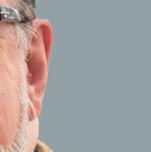

‘‘
E: We started our net zero commitment to making zero carbon shipping a reality in 2017 and since then we’ve been driving a decarbonisation strategy to reduce scope 3 emissions both for Cargill and our customers. Even though we are charterers, we are not afraid to be a development partner and invest, share risks and be transparent with our learnings to make a difference to transforming the industry. With vessels that remain in service for decades, we know that decarbonising the shipping industry will not be a linear process, but we can already go a long way towards our goals by using technologies that are available today. And we are also investing in technologies that will be delivered in the next five years. Examples include wind-assisted propulsion technologies; biofuels; dual methanol-fuelled shipping; and energy-saving devices as well as various operational efficiencies.
Continuous disruptions to supply chains seems to be a given now
PATRICK VERHOEVEN, Managing Director of IAPH
P: Another project which we will be announcing this year is the ‘Port Readiness Level’ tool for clean marine fuels, which was developed with the World Ports Climate Action Programme, a platform of ports leading in energy transition. This tool will enable port authorities to self-assess where they are in terms of accommodating ships running on alternative fuels and providing bunkering services to them. In a second stage, we hope to develop this into a publicly accessible tool providing information on clean marine bunkering services to shipping companies. On the safety aspect of bunkering, the project builds on the long-standing work of our Clean Marine Fuels working group.
Q: In what ways can ports support companies like Cargill in the decarbonisation process?
E: Ports can most certainly support in our operational efficiencies initiatives. We strive to make sure each and every vessel is being run at optimal speed, consuming the least amount of fuel using fuel models, digital twins as well taking the most optimal route all run by Zero North. So that’s one area, focusing on the ship. If you ask me what’s missing it's that while we optimise a voyage from Point A to Point B, that’s anchorage to anchorage — what’s missing is by engaging and collaborating with ports globally via data standardisation and transparency, so we can also optimise the complete voyage taking into account berth line-ups and turnaround time at ports. This is some of the
work we are doing right now and hopefully we can bring these conversations to the IAPH. Ports will also play a vital role in accelerating the adoption of zero-carbon fuels by being ready sooner rather than later.
P: A lot of work has been done on time of arrival and port call optimisation - an international task force has looked at this with the shipping industry, and I think everybody now understands what the port call process involves, the complications, contractual issues, especially in the container and bulk sectors. But we need to start implementing it. There are already a few ports that are starting to use a more systematic approach, not just the port authority — but also involving terminal operators, shipping lines, ship agents etc. — but we are running a follow-up project on that, which is called the Supply Chain Efficiency Project. But there’s still a lot of work to be done. I think our role is to amplify the experiences of ports working in cooperation with shipping agents, terminals, that are succeeding in this area.
E: I understand why the focus has been a bit more on the container segment but I actually feel the low-hanging fruit here is not necessarily the container segment, more on the bulk side, where you have the most waste and leakage. The container segment in general is very efficiently run because of how expensive the ships are and also considering it’s a liner service. Whereas bulk, because it’s a tramp service, is where you have ships that could be waiting for 30 days, or up to 60 days before they actually come alongside the berth, and they don’t know this until they arrive at the port. So had we known this, for example, when we are still at load port before sailing, we could’ve adjusted our speed accordingly — this is the type of mind shift that we want to start instigating with ports and terminals. It’s definitely not going to be a one size fits all, so the solutions that are being worked on that fit the container side segment might not necessarily be ideal for bulk. I always use Newcastle in Australia as an excellent example of a port where they implemented a while ago virtual notices of arrivals. It has worked successfully so we already have a living example in front of us - all we need to do is to share the learning and experience and see how we can possibly roll it out globally. The key message from Cargill is that we are extremely keen to work with ports globally to make zero-carbon shipping a reality. It is only through collaboration that we will be able to navigate these unchartered territories together. :
7

8

Industry players back in focus
Terminal operators and shipping lines: a long-term investment strategy. By Johan-Paul Verschuure, project director, port and logistics team, Rebel Group
For roughly a decade, financial players increased their ownership of port assets. Financial investors were attracted to the port sector by lower interest rates, a push to deploy more money and attractive long-term and stable revenue generation offered by ports. Last year saw the reversal back to the old normal. Port operators and shipping lines are now dominating the transactions headlines.
Deal-making trends
Shipping lines and terminal operators were involved in almost 80% of port transactions registered in 2023. This is the highest level in the past 11 years registered in our database of 444 transactions during this period (excluding refinancing and financing of expansions). The number of transactions recorded last year was in line with the number of deals in the preceding two years, indicating that the rise in interest rates did not affect the activity, though it did impact the type of buyers of the terminals.
The windfall profits made over the logistic turmoil in 2021-2022 were reinvested by the shipping lines into terminals, with (in particular) Hapag Lloyd via their new terminal investment business, CMA CGM and ONE group active in 2023. In 2022, MSC bought the Bollore port portfolio in a similar wave of transactions.
The question will be whether the shipping lines can keep up with these investments now that profits have returned to pre-pandemic levels. In 2023 there were still financial investors getting their hands on terminal assets, albeit that these were mostly consortium deals.
Concession duration
There was also a relatively high share of privatisations, new concession agreements and greenfield developments in the recent past after years of low activity. These new agreements sometimes have relatively long contract durations of over 50 years. This is to ensure that investments can be recouped and long-term commitments are given. However, this also results in giving away valuable land in ports over a period which is very difficult to forecast and which may see a different cargo mix or market demand in the port.
PIctured: Terminal operators and shipping lines have become more active once more in deal-making across the ports sector, offsetting financial investors
9
TRENDS
PERSPECTIVE CONCESSION
Photo: Hapag-Lloyd AG























































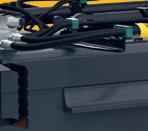
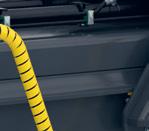
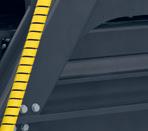
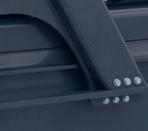
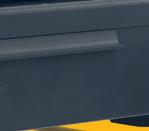









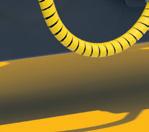











































One of our hard-working container handling spreaders



Dedicated top lift spreader for handling of laden ISO containers weighing up to 45 tonnes. Designed for mounting on reach stackers.




Meet the rest of the team at elme.com











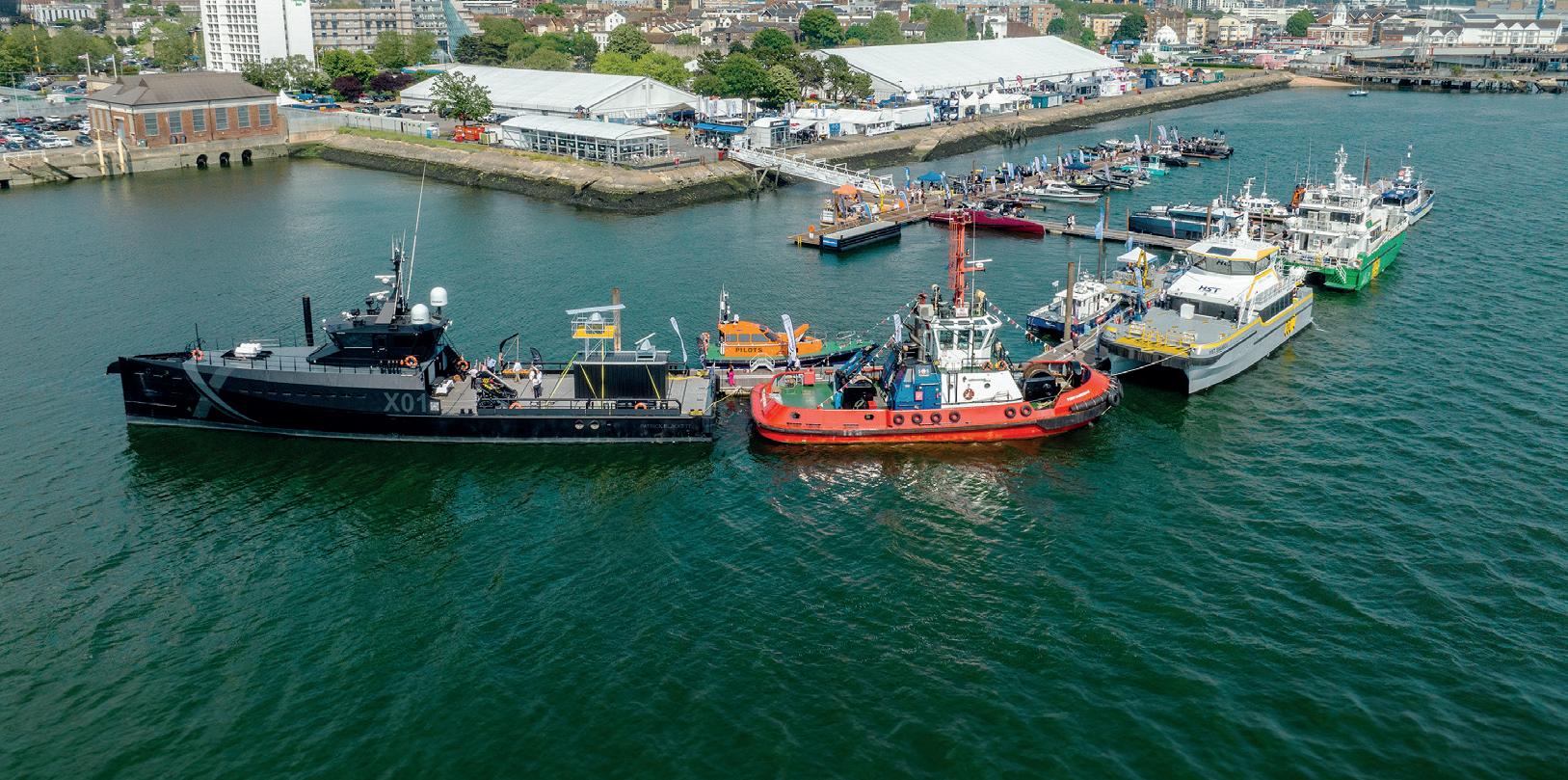

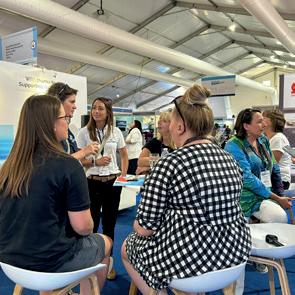

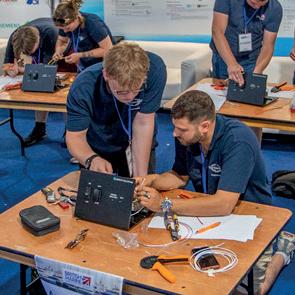


The 25th edition of Europe’s largest commercial marine and workboat exhibition, is a proven platform to build business networks.
Seawork delivers an international audience of visitors supported by our trusted partners.
Seawork is the meeting place for the commercial marine and workboat sector.
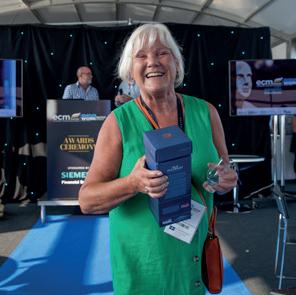
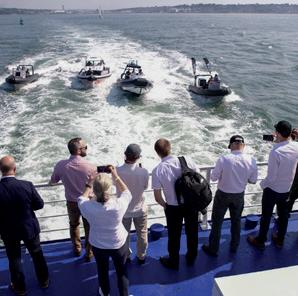
The European Commercial Marine Awards (ECMAs) ceremony celebrates individuals and innovative companies on Tuesday 11 June. experts, helps visitors to keep up to date with the latest challenges and emerging opportunities.
The Careers & Training Day on Thursday 13 June 2024 delivers a programme focused on careers in the
10 817 INNOVATION | Top Lift Spreader
JUNE Southampton United Kingdom
of undercover halls feature 400 exhibitors speed for security interventions
Search & Rescue.
and
For more information visit: seawork.com contact: +44 1329 825 335 or email: info@seawork.com #Seawork Media partner MARITIMEJOURNAL COMMERCIAL MARINE BUSINESS Speed@Seawork Sea Trials & Conference SIGN UP TODAY
commercial marine industry.
Which parties are buying port terminal assets?
Technology will change dramatically over this period resulting in different ports and requirements. The value of the option to repurpose the terminals or have a new bidding round at the end of the period should not be underestimated. Proper exit clauses and/or specifying parameters formulating changing requirements in the port should be included in the agreements.
Port authorities should also be careful with long concession durations given the likely area requirements involved with energy transition and the circular economy. In ports with the ambition to facilitate these new flows, there may be limited possibilities in the next decade for developing other terminals than those for import for energy and raw commodities. Rather than adding terminals, there is an increasing pressure to squeeze out more capacity from the same footprint. The energy density of ammonia and hydrogen is such that the storage space required will be a factor, two to even five times more, for the same imported amount of energy. On top of this, additional safety margins will need to be implemented. Considering the vast sizes of the liquid bulk terminals in North West Europe, it is not hard to imagine the pressure on space in ports in the future.
On top of this, ports and shipping is getting more scrutiny from the public for its environmental footprint. Despite being the greenest mode of transport on a per mile basis and the crucial role of ports for the broader welfare of the hinterland, getting the permits for realising new port capacity is becoming increasingly difficult. Also, growing negative sentiment towards industrial complexes and the ability to file objections to permits have implications on development lead times. With longer permitting processes and frequent delays, utilisation rates in the European and UK port sector will increase. Consequently, the port sector will become more vulnerable to fluctuations and congestion at terminals. We all remember from recent events what that can lead into.
Implications for port financing
Ports will need to reconsider their income structure. In ports where this trade-off between cargo terminals and terminals
Terminal operator to shipping line
Shipping Line
Industry Player
Financial Player
Consortium
serving the energy transition is strongest, concession fees will have manoeuvring space to increase in the near future. Locked-in rates over long periods in concession agreements will reduce the ability to revise this part of the income structure and will leave adjusting the port dues as the key option.
Port authorities will face large reinvestments in the coming decade with EU requirements for shore power, a push for increased use of intermodal transport, new/converting terminal infrastructure and pipeline corridors, smart port solutions and electrification of port and transport equipment. The jump in service levels cannot be financed while leaving port dues and concession rates unaffected – as has been common in quite a few ports.
The key for port authorities is to understand its exact position in the overall supply chain and what raising of port dues and concession rates will mean for its competitive position. Typically, the concession rates and port dues on a per tonne and per TEU basis are only in the order of magnitude of one or two per cent of the overall supply chain costs, and particular components of the tariff regime can be optimised. Flexible approaches to react on potentially fast-changing market conditions in ports should be considered and analysed.
Summary
Financial players have become less active in acquiring port assets with rising interest rates. Investment momentum is back with the industry players. Terminal operators and shipping lines seem to realise the long-term value of terminals.
In particular, with increased pressure for space in ports, increasing difficulties freeing up new land for industrial complexes and larger investment requirements for port authorities, securing terminals with a long-term focus seems like a sensible strategy for investors with the appetite for such a long-lasting vision.
As the windfall profits of the shipping lines have dried up, we will have to see who will have the financial strength to get their hands on new terminals next year. :
11
0 2103 2014 2015 2016 2204 2239 2017 2018 2019 2020 2021 2022 2023 10% 20% 30% 40% 50% 60% 70% 80% 90% 100% 32% 16% 8% 32% 12% 38% 4% 8% 35% 15% 34% 6% 6% 34% 19% 21% 11% 9% 47% 13% 25% 8% 25% 30% 11% 33% 0% 21% 44% 3% 31% 8% 14% 31% 17% 31% 0% 3% 49% 18% 35% 8% 3% 43% 11% 35% 12% 35% 14% 3% 29% 5%3% 46% 20%
FEATURE INDIA
India gaining ground
Ports and logistics modernisation initiatives continue to gain ground in the world’s most populous country, a vital step in bringing down costs and raising efficiencies
AJ KEYES
According to the United Nations, India is now the world’s most populous country and has overtaken China. This means the country’s ports must be an integral part of helping India develop its potential as a tiger economy.
The Ministry of Ports, Shipping and Waterways in India states that there are 12 major ports (and 200 non-major facilities), which have to handle over 95% of its trade (and 65% of value) to serve its 1.43bn inhabitants.
The need for port capacity to keep pace with cargo demand is undeniable, but the country lacks three things: overall container handling capacity; handling capacity correctly formatted to the needs of the largest vessels; and limited inland container delivery, restricting establishment of critical mass away from Mumbai and Gujarat.
There are a number of confirmed or known projects in India set to increase container capacity, with planned and proposed investments across both the eastern and western coasts.
However, building ports is one thing (assuming plans come to fruition), but operations must still be efficient and landside infrastructure must play its part too.
The national government has a plan to significantly improve its key operational port performance parameters, with faster vessel loading and unloading and, as a
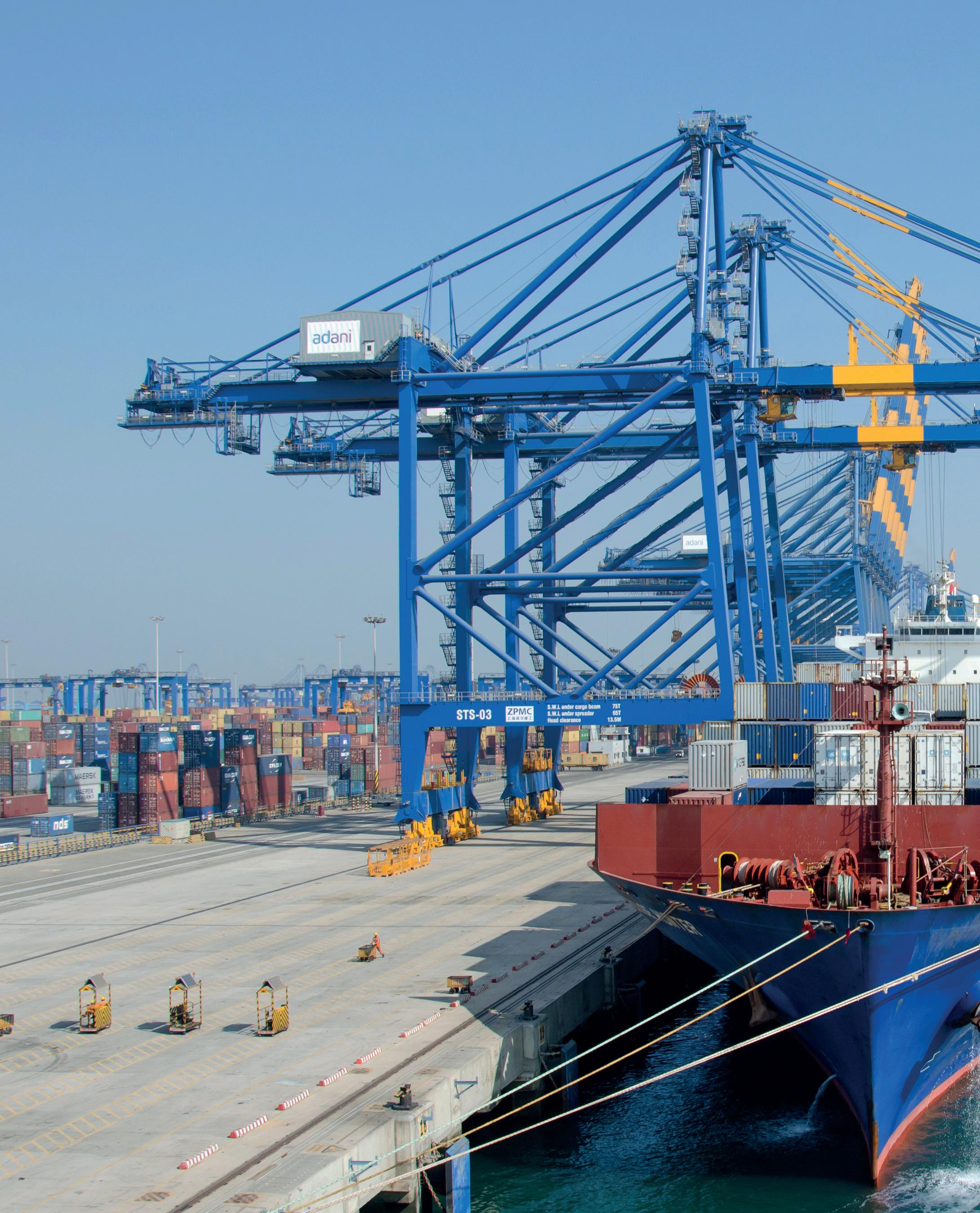
result, quicker ship turnaround. It points to the World Bank’s Logistics Performance Index (LPI) Report (2023) that states how India has risen from a ranking of 44th in the International Shipment Category in 2014, to 22nd place currently.
This improving efficiency is supported by confirmation that ‘Turn Around Time’ at Indian ports has reached (a presumed average) of 0.9 days, which is better than the US (1.5 days), Australia (1.7 days) and Singapore (1.0 days), according to official figures.
Although this is clearly no more than a wide-ranging summary that encompasses a number of combined generic factors, involving surveys of information and analytics, it does offer an indication of ongoing trends.
Ambitious ports plan
India has an ambitious plan for its ports that it hopes will build on this type of information. The Amrit Kaal Vision 2047, formulated by the Ministry of Ports, Shipping and Waterways, builds on the Maritime India Vision 2030 and aims to develop world class ports and promote inland water transport, coastal shipping, and a sustainable maritime sector.
12
Pictured: Container vessel in port of Mudra, India Photo: Druid007/Dreamstime.com

The Minister of Ports and Shipping recently announced a comprehensive plan to achieve a 10,000 million tonnes per annum port capacity by 2047. Again, this is a generic figure and perhaps a bold ambition, but there are a number of ongoing and planned container port capacity projects on both the east and west coasts of India. Collectively, these will each add extra space to the country’s ports and, with the involvement of both specialists in the Indian port market and leading global terminal operators, should enhance and improve the marine activities for container handling.
Yet this investment may potentially see the weakest link in the supply chain
declared as operational, after the successful trial run of the first freight train over the 401-km-long New Sahnewal (Punjab)–to-New Khurja (Uttar Pradesh) section of the EDFC.
There is no doubt that this rail option will help generate a seamless and more cost-competitive cargo option, while also ensuring a more accurate travel time prediction for freight transportation –both highly needed in India.
There are other logistics strategies to further help support the movement of cargo nationally and to/from ports. Multimodal logistics parks (MMLPs) are being developed to bring improvements to India's freight logistics sector. They are also part of the PM Gati Shakti National Master Plan, which was launched in 2021 to provide multimodal connectivity infrastructure to key inland economic zones.
Multimodal logistics parks are being developed to bring improvements to India's freight logistics sector ‘‘
moving inland, firmly placing the pressure on the quality and reliability of road and rail connectivity to support the country’s ports.
Much-needed transformation
The Indian logistics sector continues to undergo a much-needed transformation, with a clear focus being given on transportation infrastructure across much of the country.
Indian Railways has recently achieved a significant milestone in its Dedicated Freight Corridor (DFC) project with the completion of the Eastern Dedicated Freight Corridor (EDFC). As a result, the 1,337-km rail network has been officially
These new multimodal parks can act as hubs that are able to connect different modes of transport, if built in conjunction with DFCs, to lower logistics costs and increase freight modal share of railways. As a result, the role of logistics parks along the DFCs will span across India and help facilitate a better and (ultimately) seamless movement of goods to/from ports and inland locations of demand and consumption.
There is also still in the background the potential privatisation of Container Corporation of India Ltd. (CONCOR), although there seems to be little movement on this as yet and it remains a long-time talked about development. However, it cannot be ignored as a potential future development.
The World Bank states that the development of DFCs will enable India to reduce its high logistics costs of around 15% of GDP to a target figure of 8% of GDP – a number more in line with global standards.
India’s ports and logistics industry needs to improve levels of infrastructure, costs and efficiency, but it seems the process needs momentum –and quickly. :
13

ANDREW PENFOLD
Independent Maritime Economist
Wake-upcall
Moving from potential to reality: What are the barriers to India delivering its true potential as a container ‘Colossus’?
Nobody doubts the opportunities facing Indian exporters in the next few years. Geopolitical shifts away from China, together with the continued opening of the Indian economy to inward investment, offer huge potential for the country. Current developments essentially represent a further continuation of the Manmohan Singh reforms that were initiated in 1991. However, the pace of development has been far from easy in the subsequent period with inertia frequently slowing developments and reducing the enthusiasm of international investors for Indian port projects.
The correct steps are being taken for further development of an export-orientated boom for the country. This as has been noted first in the smaller east Asian economies and then (much more importantly) in China. Despite strong advances there remain clear obstacles in the way to accelerating this trend.
Firstly, India is not a single market and the problems facing the major west and east coast markets are different and reflect alternate political realities. Western states – principally Gujarat and Maharashtra, have seen demand driven by access to Delhi and Mumbai. In the east, Chennai has been driven primarily by more localised demand. Inland costs and trade barriers between different states has also slowed progress –especially for trucking – and this has placed further pressure on under-invested rail.
These issues combined with cabotage restrictions have forced reliance on external deepwater hubs and thirdparty feedering to serve relatively small local markets. For smaller ports this has restricted volumes and constrained the level of required investments. The current process of
cabotage reform (allowing third-party vessels to trade between Indian ports) is altering this position, but given Indian ‘inertia’ this will take time to fully deliver benefits. There remains a need for strong and sustained investment in deepwater capacity that is correctly formatted to the largest container vessels to extend Indian reach to Europe and the US. Many investors have sought to play a role in these developments in the past 15 years or so only to be adversely impacted by local political pressures, particularly in Maharashtra and Gujarat, where vested interest groups have used the labyrinthine Indian legal system to stymie valid projects. The upshot has been a reliance on the largest international groups who have both the patience and the resources to seek a path through this maze.
Given these barriers it is clear that India could already have been enjoying a much stronger level of container trade growth 10 years ago. Of course, the process of disentangling a formerly protectionist economy with very strong vested interests was never going to be easy. Against this background, these problems are well known and are being addressed. The development of deepsea ports (correctly formatted with modern and efficient handling systems) is progressing and a strong focus on inland distribution linking the industrial centres with the ports is also easing the situation. Reform of intra-state rules and cabotage will also benefit the local distribution of containerised goods – imports and exports – for local markets. The outlook is positive and (assuming continued political stability) should push India into the front rank of manufactured containerised goods trades. The ‘stars are firmly aligned’ for this. :
14
Lee Buttaci, UKI/Europe Director, Ports & Marine Transportation, Europe & India AECOM. Increased automation, digitalisation and decarbonisation are among the challenges and opportunities in building the port infrastructure of tomorrow
Closing the gaps Q&A
Q: Please give us a brief introduction of your role and how you interact with the port sector?
A: My role is to ensure that from the early planning stages through to construction we leverage our global expertise to implement industry best practice and deliver effective, quality local solutions across the entire life cycle of vital port and marine infrastructure. My focus is to maintain client relationships, which are built on an appreciation of business needs and a proven record of innovative, cost-effective project development.
Q: What do you see as the critical factors now when planning and implementing port projects?
A: Compliance with ESG is certainly a focus for many stakeholders. Zero carbon generation within the next 20 to 30 years is now mandated by many authorities in industrial countries and, when combining this with enhanced environmental compliance, will need to include incentives (subsidies) and mandates by authorities to create an outcome that is sustainable both in an environmental and commercial way. Green energy, automation and digitalisation for optimisation of port operations, together with provision of flexibility within the port infrastructure for change of operation (with minimum investment), will play a great role in future port planning and design.
Q: How has your range of services expanded in recent times to accommodate the changing needs of ports?
A: Port decarbonisation has accelerated in recent years. Electrification of ports is expanding because of both internal and external mandates. More and more cruise



facilities are moving towards ship-to-shore power while cargo/container operators are seeing a big push towards net zero. Densification of existing terminals appears to be a quicker, more affordable fix for capacity increase and use of simulation and emulation techniques have proved to be an effective mid-term fix for such capacity issues prior to actual expansion of the ports, which in many cases is limited due to space and environmental challenges.
Q: What do you identify as the main technical factors underpinning port development going forward?
A: The continued push towards automation and use of digital tools will serve to improve port efficiency as they help lower operational costs and improve terminal productivity, capacity, safety and security. The challenge is to make sure that these are considered in the most appropriate context for individual ports or terminals. Planning and simulation of such technologies, including the specific operational expectations and power requirements of various solutions, ensures the context, vision and results are aligned for future success. We help translate such requirements and investments into automation roadmaps that can support planning for capital and operating costs, integrating key infrastructure decisions regarding operations and decarbonisation efforts.
Q: Is there anything you want to add about you and/or your company’s approach to handling the complex challenges of modern port operations?
A: AECOM understands that effective goods movement requires effcient on-dock, near-dock and inland intermodal facilities with connectors from inland logistics and distribution centres, ports and airports to highways and railroads. We’ve been in this business since the onset of containerisation. From business planning and economics to master planning and operations analysis, to the detailed design and construction of facilities, our team understands the entire process.
Q: What do ports need to do now to prepare for a changing infrastructure landscape? How can ports close the gap?
A: Historically, ports have tended to create population centres and as these have grown the ports have become a nemesis to the cities they have created. Ports are the economic engine of the region’s hinterland, but congestion and air pollution are a byproduct of ports. Gradual separation of ports’ transportation infrastructure (future ports) by using inland ports’ distribution centres along with digitalisation to ease the pickup and drop-off of freight from the inland facilities can be a good first step to reduce air pollution and congestion. Other measures, such as innovations in cargo-handling equipment, that streamline and optimise port operation need to be considered. Automated vehicles, green fuel freight transport and self-energy sustained ports are all part of future ports initiatives. :
15
WORLD PORTS TRACKER Q4
Looking forward
Ports worldwide have, on average, become a little more optimistic than half a year ago on the expected traffic evolution in the coming 12 months
THEO
NOTTEBOOM AND THANOS PALLIS
evealing the most recent trends, the IAPH World Ports Tracker enables ports to understand better the available prospects and challenges they need to address. The sixth edition, prepared with the contribution of IAPH members, provides ports with a timely understanding of the strategic challenges that emerge regionally and globally. The tracker relies on three sources: survey-based results on cargo and passenger markets in ports; container port performance data supplied by S&P; and liner shipping connectivity index (LSCI) data provided by UNCTAD and MDS Transmodal.
RThe survey questions reveal the trends in the container market, the other cargo markets (breakbulk and bulk) and the passenger/cruise business. The tracker report also includes questions about more general issues and strategic and operational considerations for seaports, such as port investments and new terminal capacity extensions. Here, we present some excerpts of the main findings using dashboard-style tables:
Trends in world cargo ports
Fewer cargo ports report year-on-year growth in the number of container vessel calls. Little change occurred at the level of bulk carriers and tankers. About 40% of respondents report a notable increase in other cargo vessel calls (up from 30% in Q2 2023). Sub-Saharan Africa (across the board) and Southeast Asia & Oceania (for other than other cargo vessels) present the highest shares. Ports worldwide are, on average, more optimistic than half a year ago about the expected traffic evolution in the next 12 months. In Sub-Saharan Africa, the vast majority of ports expect healthy growth. Close to 55% of ports expect a growth of at least 2% in the container throughput. The traffic volume expectations show an even stronger improvement for the other cargo markets. The regional figures reveal that the shares of
responding ports expecting traffic volume growth above 2% in the next year, across the board, are lowest in North America and North Europe and the highest in Africa and the Mediterranean.
Trends in container ports
The index-based evolution of vessel calls per region reveals that in Q4 2023 and year-on-year, seven out of nine regions showed growth in container vessel arrivals compared with the calls of Q4 2022. This growth has been double-digit in three regions — Northern Europe, Southeast Asia, and Latin America & Caribbean. From a longer-term perspective, vessel calls remain lower compared to Q1 2019 in five of the nine regions, with vessel calls in Oceania declining by more than 20%.
Between Q4 2022 and Q4 2023, the Middle East & India (+16%), the Mediterranean (+15%), and North America (+10%) reached double-digit growth in the share of calls by container ships of 8,501+ TEU capacity. A strong decrease in this share was recorded in North Europe (-12%) and Southeast Asia (-8%). Double-digit growth was observed in North America (+44%), North-East Asia (21%), and four other regions in the same period.
On a year-on-year basis, average call sizes increase in only two of the nine regions: Africa and the Mediterranean (+6% each). The decline was double-digit in Northern Europe (-15%). The steep year-on-year increase in vessel calls thus goes hand-in-hand with much smaller call sizes. When focusing on medium-term changes, however, the picture is different. Compared to Q1 2019, smaller call sizes are observed only in Northern Europe, where the change is marginal (-1%), and in the Middle East & India, where the percentage change is relatively low (-4%).
The regional data on port moves per hour demonstrate that five of the world’s nine port regions had to accept a decline in Q4 2023 compared to the same quarter in 2022. Port
16
UPDATE

productivity levels saw strong year-on-year growth in North America (+37%) and North East Asia (+13%), while they strongly declined in Africa (-13%), Latin America & Caribbean (-16%) and Middle East & India (-10%).
The bottom part of dashboard II summarises some of the findings related to the country-based Liner Shipping Connectivity Index (LSCI) data provided by UNCTAD. The five best-connected countries per region regarding the LSCI values are listed. The year-on-year development and the Q1 2019-Q1 2024 evolution of the country-based LSCIs are shown.
The comparison of LSCI in Q1 2024 with the same quarter of 2023 illustrates, among others, a positive evolution of connectivity in Sub-Saharan Africa, where all five best-
connected countries recorded an improved LSCI, with a major rise incurring in Nigeria (24.6%). A similarly positive shift was recorded in Latin America and the Caribbean (LAC), as well as in the Mediterranean Sea. In the first quarter of 2024, liner shipping connectivity has also improved compared to the year before in most of the best-connected countries in the Middle East and Indian subcontinent, in Oceania, and to a lesser extent in North East Asia. In North America, trends in the US and Canada have gone different ways. On the other hand, in the same period, the LSCI of the best-connected countries in Southeast Asia has either improved marginally or, in the cases of Thailand and Indonesia, stands lower than a year before. North Europe is the region where three of the best-connected
17
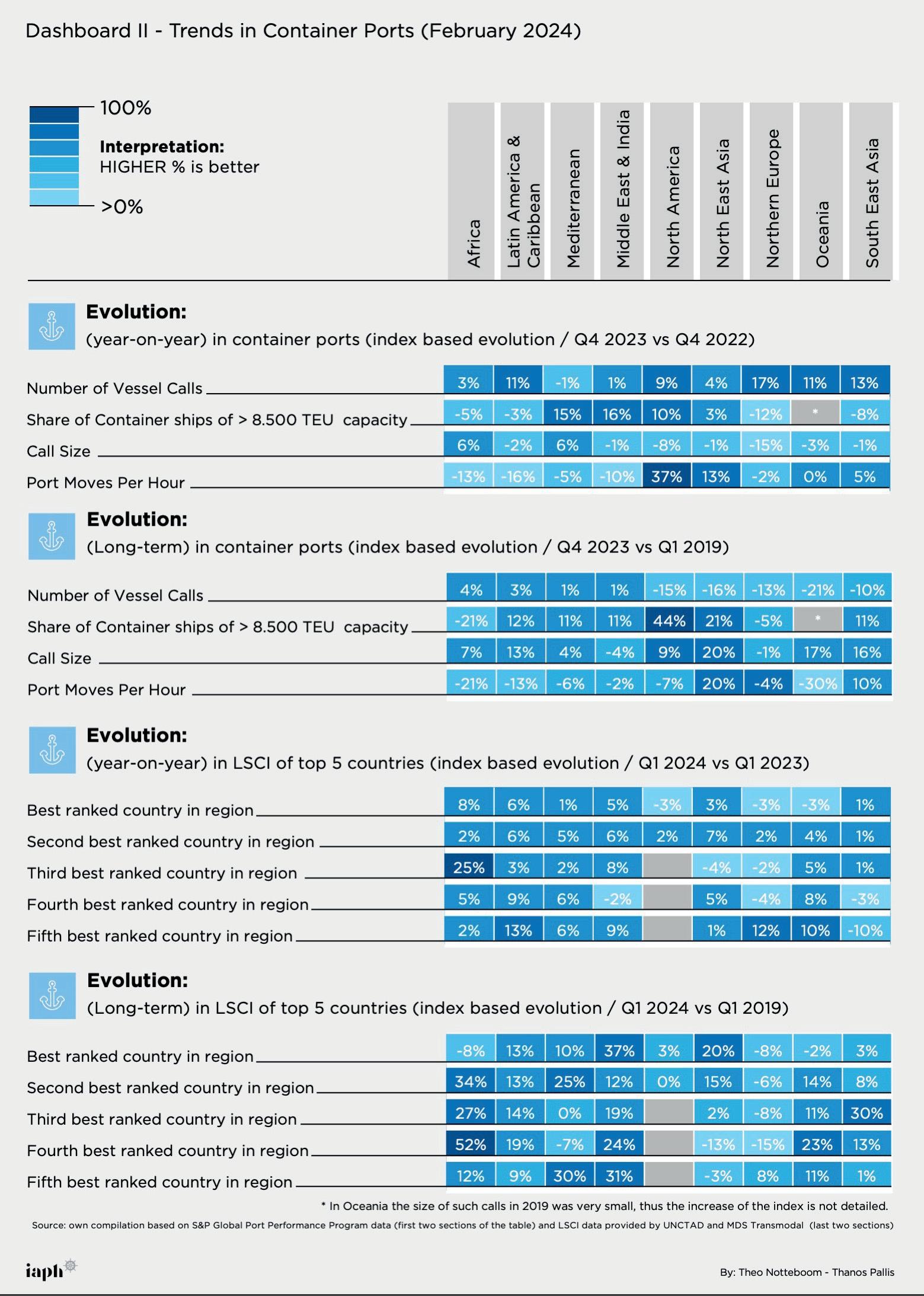
18
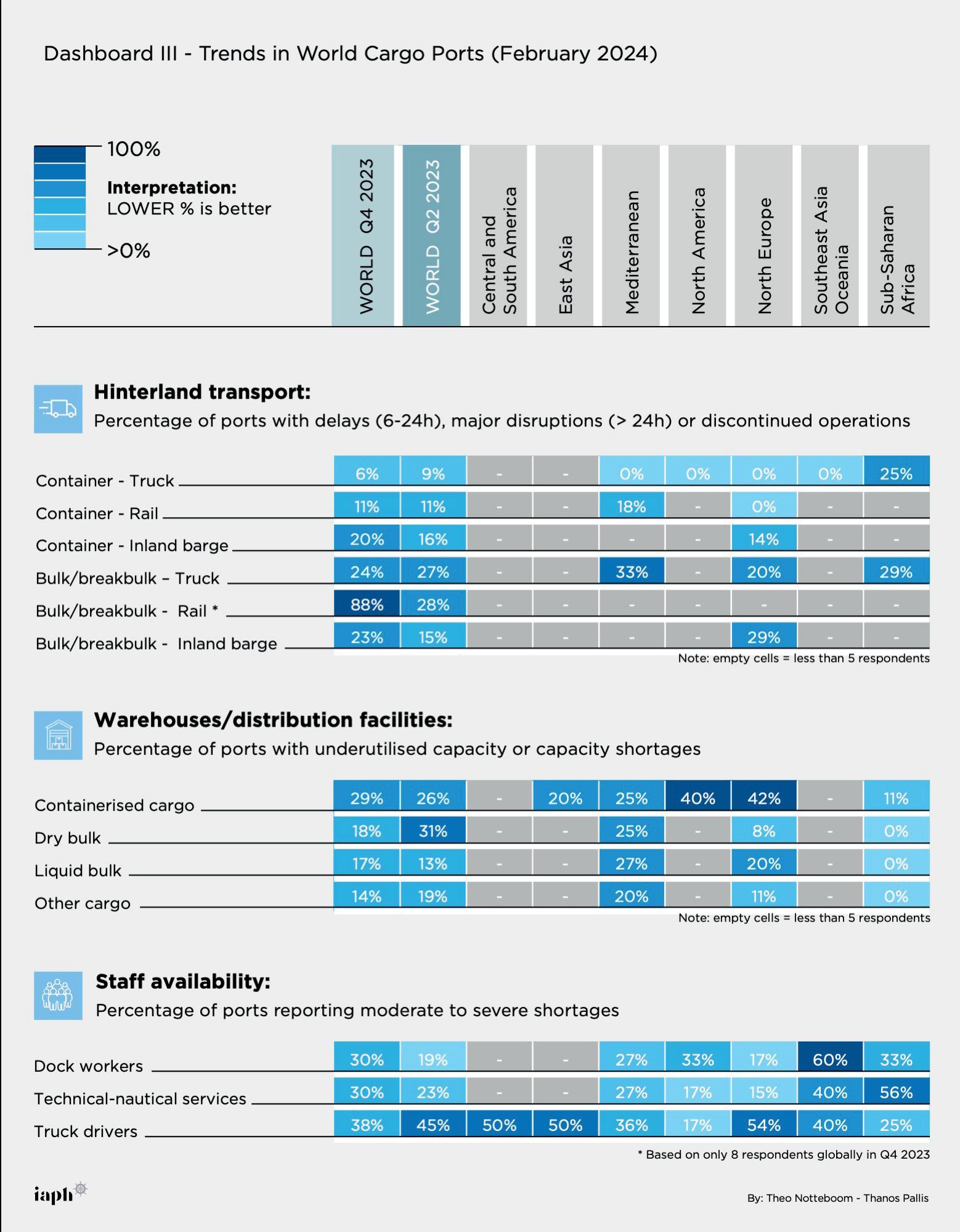
19

Ports that plan any major change in the land use in your port in the next 12 months (%, as of February 2024)
LogisticsandDistribution
BulkCargoes
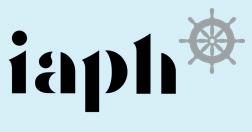
countries have seen their levels of connectivity decrease (Netherlands, Belgium and Germany). At the same time, positive or substantial improvements have occurred in the other two (the UK and Poland respectively).
Investments in ports
Decisions on investments, including implementing plans, are a subject of strategic and operational importance for ports and all current and potential service providers, port users and stakeholders. At the beginning of the calendar year, we asked ports to reflect on the progress of different types of investments they are planning. The first type of investments examined are those devoted to advancing infrastructure. The overall picture is positive. In 2023, such investments were executed as planned in more than half of the ports (53%) and incurred only minor delays in the other four (41%).
Considerable delays occurred in only 4% of the reporting ports. A tiny percentage of the ports that participated in the survey (2%) canceled or shelved their existing infrastructure development or upgrade projects they had planned by the end of the year. None of the responding ports succeeded in advancing their investments faster than anticipated. The number of ports that did not have any infrastructure development plans for 2024 stands at 11%. A noteworthy observation is the global nature of these trends: the survey did not identify delays or cancellations of port investments in any particular region.
Beyond upgrades of existing infrastructure, reported investments included, among others, new container terminals (in some cases with advanced forms of automation) and investments targeting intelligent digitalised infrastructures. In addition, reporting ports also mentioned the development of
20
25% 19% 16% 41% 24% 12% 38% 27% 28% 71% 81% 84% 59% 74% 85% 62% 71% 72% Container
OtherCargo
Industrial(excludingenergyproduction) Energyproduction(fossil) Energyproduction(non-fossil) Commercialrealestate Urban/cityfunction
More landdedicatedto thisfunction NochangesLess landdedicatedto thisfunction By:TheoNotteboom-ThanosPallis 2% 3% 4% 2%

investments focusing on the expected increase of the demand for electric vehicles, investing in constructing facilities and developing processes such as pre-delivery inspecting centres for operating state-of-the-art terminals that will serve automotive and commercial vehicle trades.
The second type of investments examined focuses on transport infrastructure such as roads, railway tracks, inland waterway infrastructure and pipelines. The survey revealed that during 2023, half of these investments were executed as planned (50%) or were subject only to minor delays (34%). However, significant delays were incurred in 13% of the reporting ports, with 3% of ports shelving or cancelling such inland transport-related investments.
The third type of investment considered in the survey focuses on the onshore power supply (OPS) for seagoing vessels and inland vessels (where available). About 35% of ports indicate they did not plan such investments in 2023. Among the ports investing in OPS, 49% are executing these investments as planned, 31% incurred only minor delays and a significant 17% had to deal with major delays. Interestingly, 3% of ports executed OPS projects faster than planned.
Investments in solar and/or wind energy constitute the fourth investment category of the survey. The results are rather mixed, with 10% executing the investments faster than planned, while 17% incurring major delays. Remarkably, almost half of the ports report they had no such investments planned in 2023 despite the rising demand for green electricity. Another interesting finding is that none of the responding ports have shelved or cancelled planned investments in wind or solar energy.
A last investment category relates to making alternative ship fuels available in ports. This category includes investments in fuel production plants, bunkering facilities, and associated line infrastructure (such as pipelines) for methanol, ammonia, green hydrogen, biofuels, etc. A sobering observation: only slightly more than one-third of ports report they had such investments
planned in 2023. Six out of 10 of these ports are executing the investments as planned, with 7% of ports moving faster than planned and an equal share incurring major delays. There have been no reports by the responding ports on the shelving or cancelling of such projects.
Capacity expansion
The choices made regarding expanding port capacities are related to investment decisions. About 39% of container ports point to major container terminal capacity expansion or upgrades becoming operational in 2024.
About 39% of container ports point to major container terminal capacity expansion or upgrades becoming operational in 2024. Similar upgrades and expansions are taking place in the bulk market and will be operational in 21% of the reporting ports. Capacity upgrades or expansions are less frequent in the liquid market (15%). :
ABOUT THE AUTHORS
THEO NOTTEBOOM is Professor of port and maritime economics. He is Chair Professor North Sea Port at the Maritime Institute of Ghent University and a Professor at Antwerp Maritime Academy and the Faculty of Business and Economics at the University of Antwerp. He is co-director of Porteconomics.eu, vice-president of the International Association of Maritime Economists (IAME), and a member of the IAPH Risk and Resilience Committee.
THANOS PALLIS is Professor in port and maritime economics and policy at the Department of Port Management and Shipping, at the University of Piraeus, Greece, and director of the University’s Laboratory for Integrated Port Economy. He is co-director of Porteconomics.eu, immediate past president of the International Association of Maritime Economists (IAME), and a member of the IAPH Risk and Resilience Committee and the IAPH Cruise Committee.
21
Pictured: Fortescue Green Pioneer in the Port of Singapore
Photo: Fortescue Metals Group Ltd
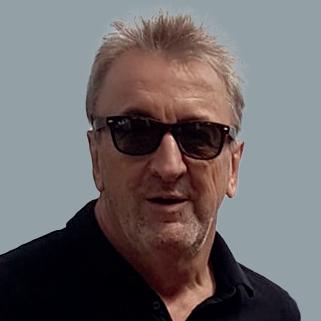 MIKE MUNDY Editor & Independent Analyst
MIKE MUNDY Editor & Independent Analyst
THE COLUMN
Digitalisation Strategy Needed
BIMCO is banging the drum again promoting the idea of the International Maritime Organisation (IMO) establishing a comprehensive maritime sector digitalisation strategy that aims to achieve standardisation, harmonisation and the overall integration of systems. This covers initiatives such as the Maritime Single Window (MSW) implementation, digital signatures, autonomous shipping and e-navigation developments.
BIMCO has formally submitted a paper to the IMO, in conjunction with China, Liberia, Republic of Korea, Singapore, the United Arab Emirates and the International Organisation for Standardisation (ISO), that calls for the development of a comprehensive strategy on maritime digitalisation, with the objective of improving coordination among the various stakeholders to the overall benefit of all parties.
‘‘
Accelerating Decarbonisation
Another new call for greater digitalisation, enhanced data integrity and interoperability sees this as a pre-requisite to accelerating shipping’s decarbonisation. The call flows out of a study undertaken by SIA Partners and commissioned by Global Shipping Business Network (GSBN), a neutral, not-for-profit consortium.
The study states that the absence of a universally adopted digital platform creates interoperability challenges, complicating efforts to reduce carbon emissions. Such a platform, the study suggests, can facilitate achievements such as:
Another new call for greater digitalisation, enhanced data integrity and interoperability sees this as a pre-requisite to accelerating shipping’s decarbonisation
MIKE MUNDY, Editor and Independent Analyst
“For digitalisation initiatives to succeed, parties are reliant on trust in data, seamless data exchange and compatibility between shoreside infrastructure and shipboard equipment,” BIMCO underlines.
It further points out that in a recent survey conducted by BIMCO, IAPH, IFSMA and FONASBA it was found that 40% of the shipping industry is unaware of the IMO resolution mandating the use of a MSW for data exchange from 1 January 2024. Additionally, the research shows that only 36% of port calls offered the fully electronic exchange of data.
In short, there remains considerable scope for improvement in these areas.
5 The transition of an estimated 15.8 million paper bills of lading issued annually to eBLs by 2030 thereby reducing CO2e emissions by up to 440,800 tonnes.
5 A potential CO2e reduction per electronic bill of lading is approximately 27.9 kg and about 16.9 kg for an electronic Delivery Order (Edo).
The study is part of GSBN’s ongoing efforts to partner with organisations such as DNV, the Global Centre for Maritime Decarbonisation and the Maersk Mc-Kinney Moller Centre for Zero Carbon Shipping to pave the way to support the industry’s decarbonisation. :
ABOUT THE AUTHOR
MIKE MUNDY is a well-known commentator and independent analyst of the global maritime sector. He has edited a number of prestigious publications and worked in a consultancy capacity with leading port sector businesses
22




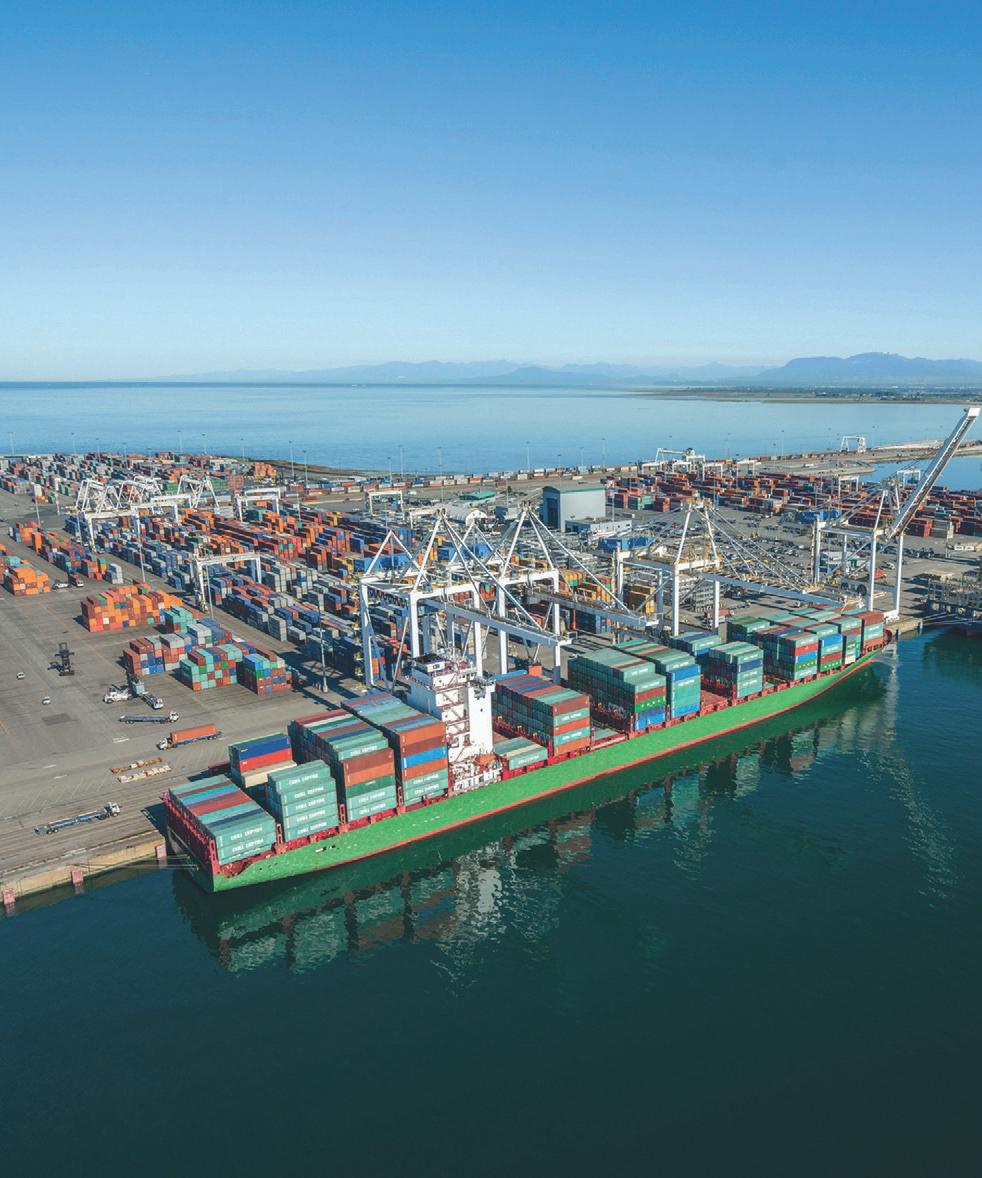







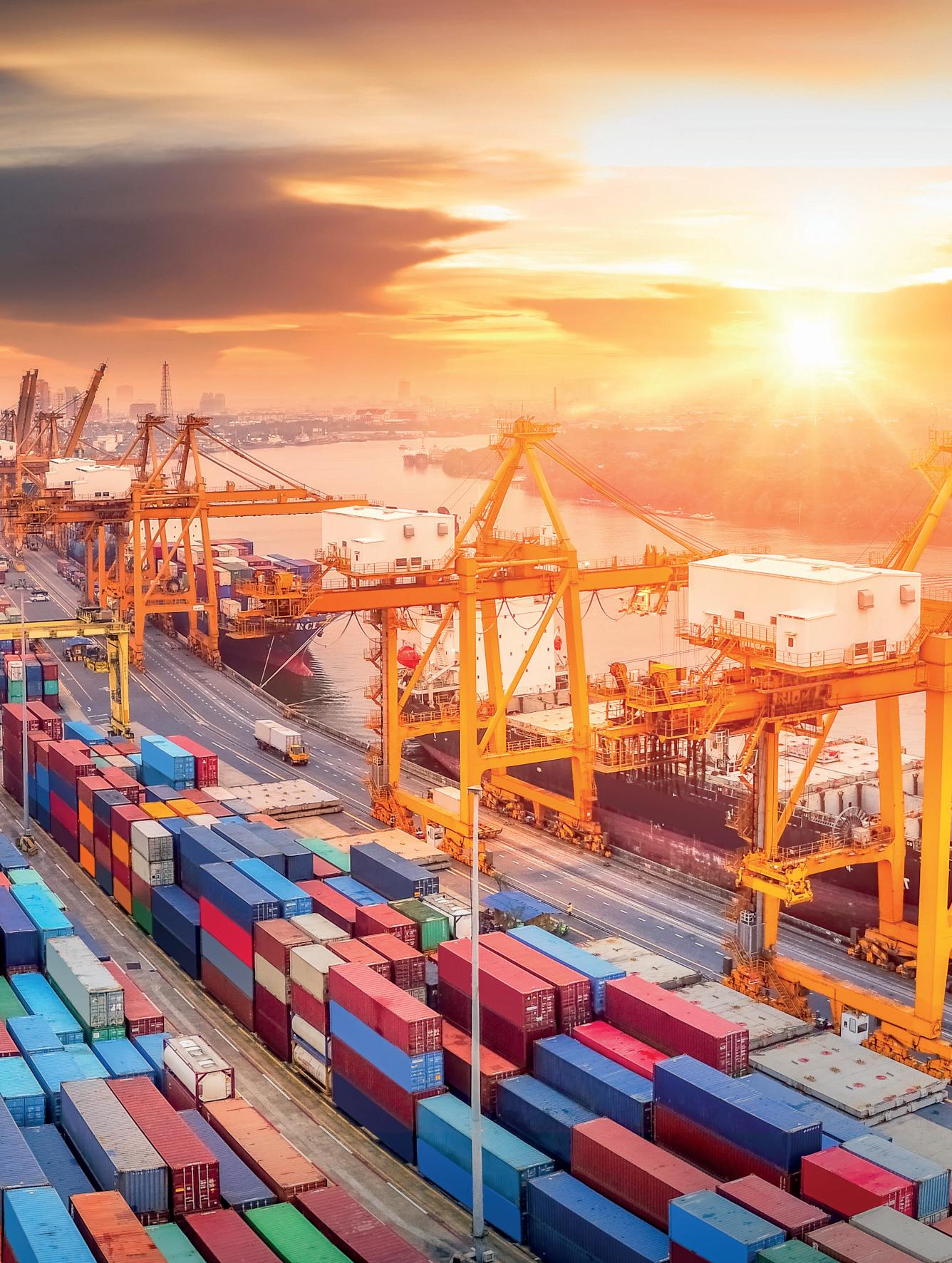
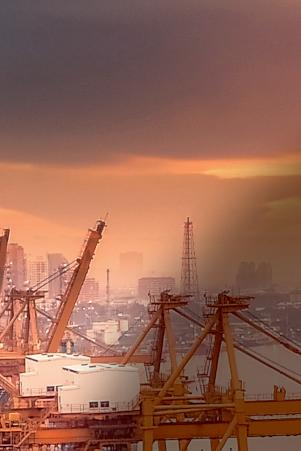





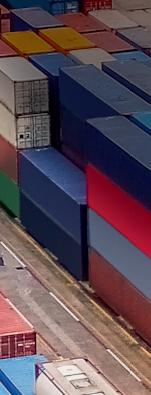
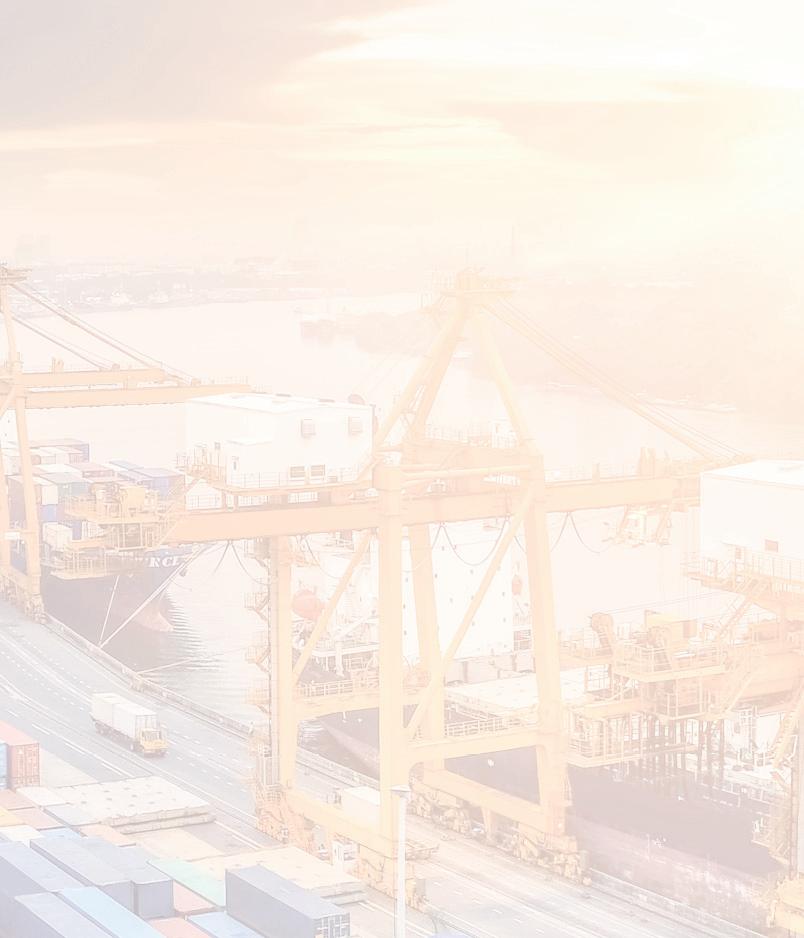







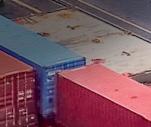
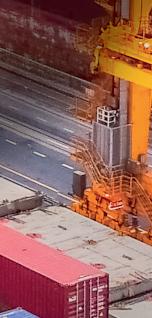
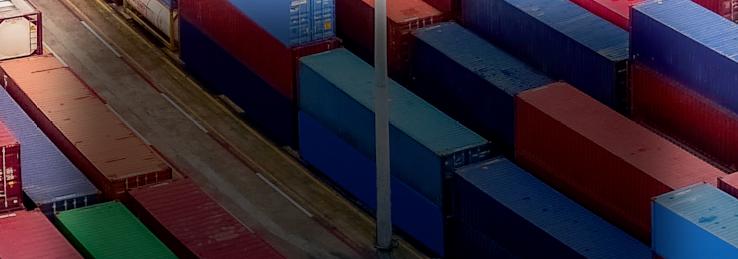



Promote your business to the right audience in the right place at the right time. Maritime Journal’s valued content focuses on vessel operations harbours and is delivered through multiple channels. t: (+44) 1329 825 335 e: sales@maritimejournal.com www.maritimejournal.com Contact us today MARITIME
COMMERCIAL MARINE BUSINESS MAGAZINE RECIPIENTS DECISION MAKERS PAGEVIEWS PER MONTH Reach industry professionals with Maritime Journal 37,000 82% 42,600 Contact us today GREENPORT INSIGHT FOR PORT EXECUTIVES MAGAZINE RECIPIENTS DECISION MAKERS PAGEVIEWS PER MONTH 11,30073%5,800 Reach industry professionals with GreenPort Promote your business to the right audience in the right place at the right time. of opportunities for campaign delivery. We provide bespoke marketing packages Green Port’s valued content is dedicated to environmental best practice and corporate responsibility centred around marine ports and terminals, including shipping, transport and logistics and is delivered through multiple channels. t: (+44) 1329 825 335 e: sales@greenport.com www.portstrategy.com/greenport
JOURNAL
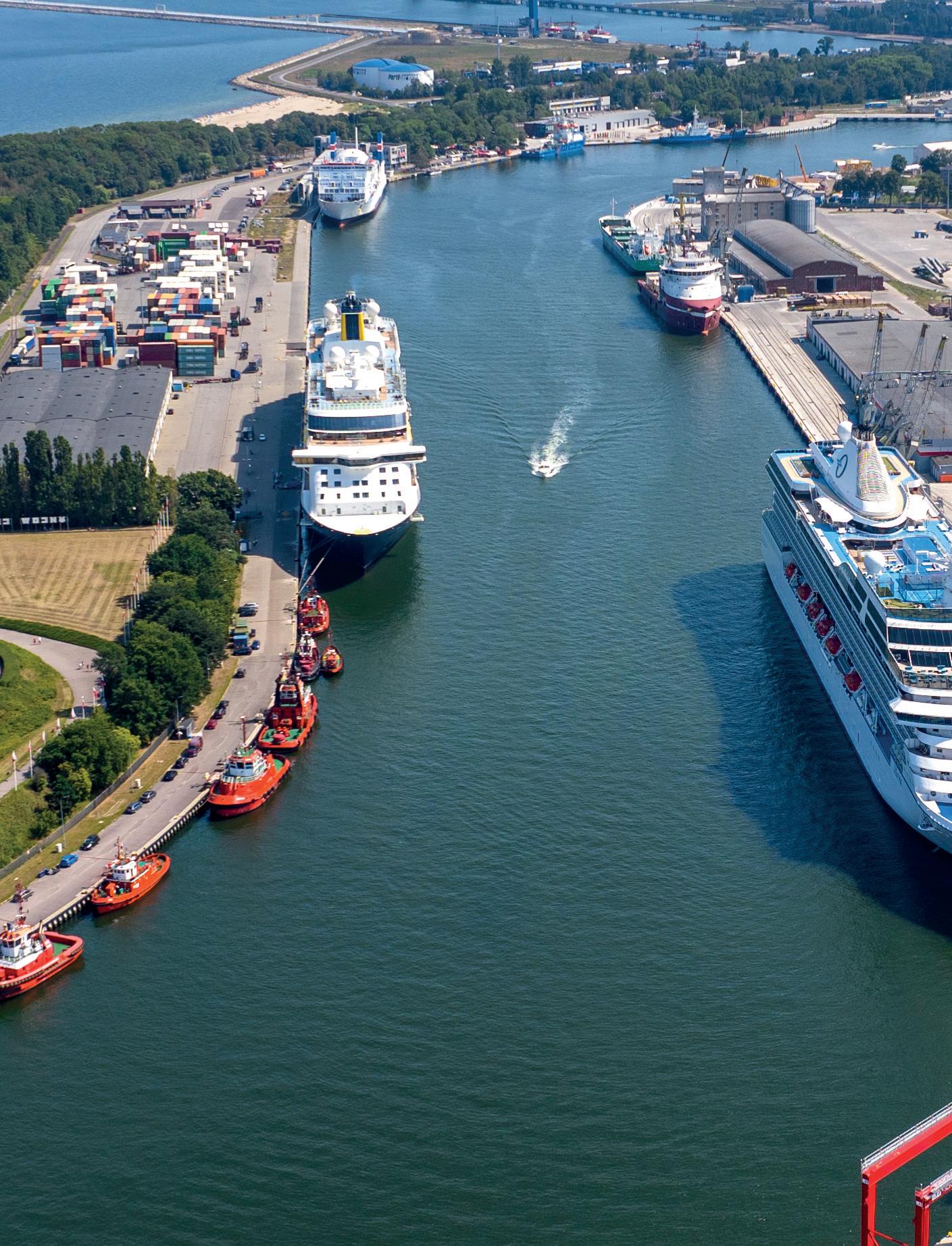
24
PROJECT FOCUS EASTERN EUROPEAN PORTS
Counting the cost of conflict
European seaports scramble to adapt to a new geopolitical reality: How the Russia-Ukraine war has impacted Eastern European ports
VLADISLAV VOROTNIKOV
The Ukraine conflict has become a black swan for the European economy and the biggest game-changer for the seaports in the continent in decades. However, it also let some market players discover the art of transforming a crisis into an opportunity.
The war in Ukraine has had a profound impact on the European maritime sector, according to seaport executives.
“Russia's aggression against Ukraine and the related economic repercussions have disrupted supply chains and caused an [European] energy crisis,” Aneta Urbanowicz, a spokesperson for Port of Gdansk, commented.
According to Urbanowicz, the Russian blockade of the Black Sea ports, Western sanctions on energy raw materials, and the decline in trade on the New Silk Road were among the key consequences of the conflict that forced radical changes in logistics.
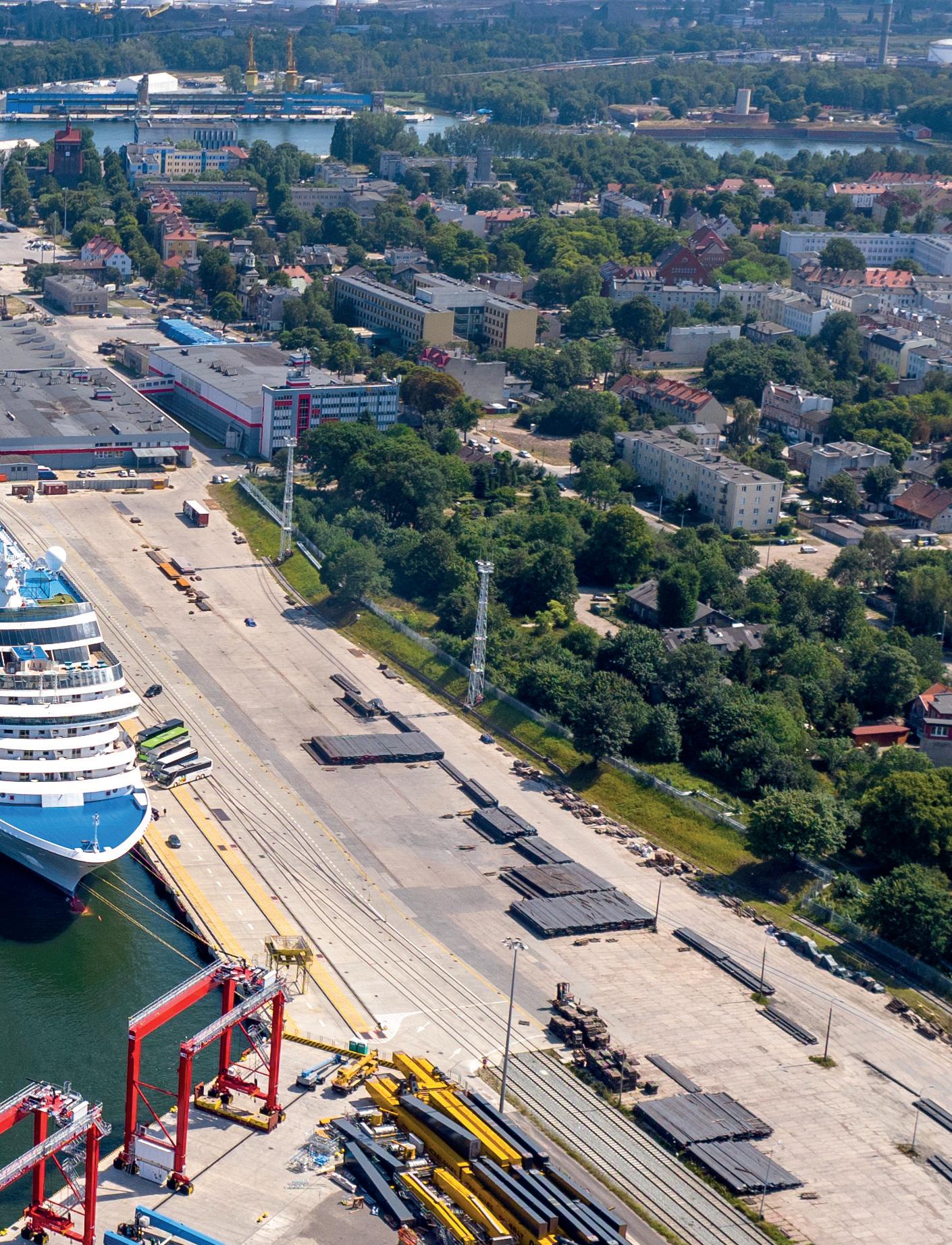
All photos: Port Gdansk/Tomasz
xxxx xxx. : X
Pictured: Xxxxx
Pictured: Ports across Europe have adapted rapidly in the wake of the crisis in Ukraine, which has had a significant impact on cargo flows across the continent
Dresler
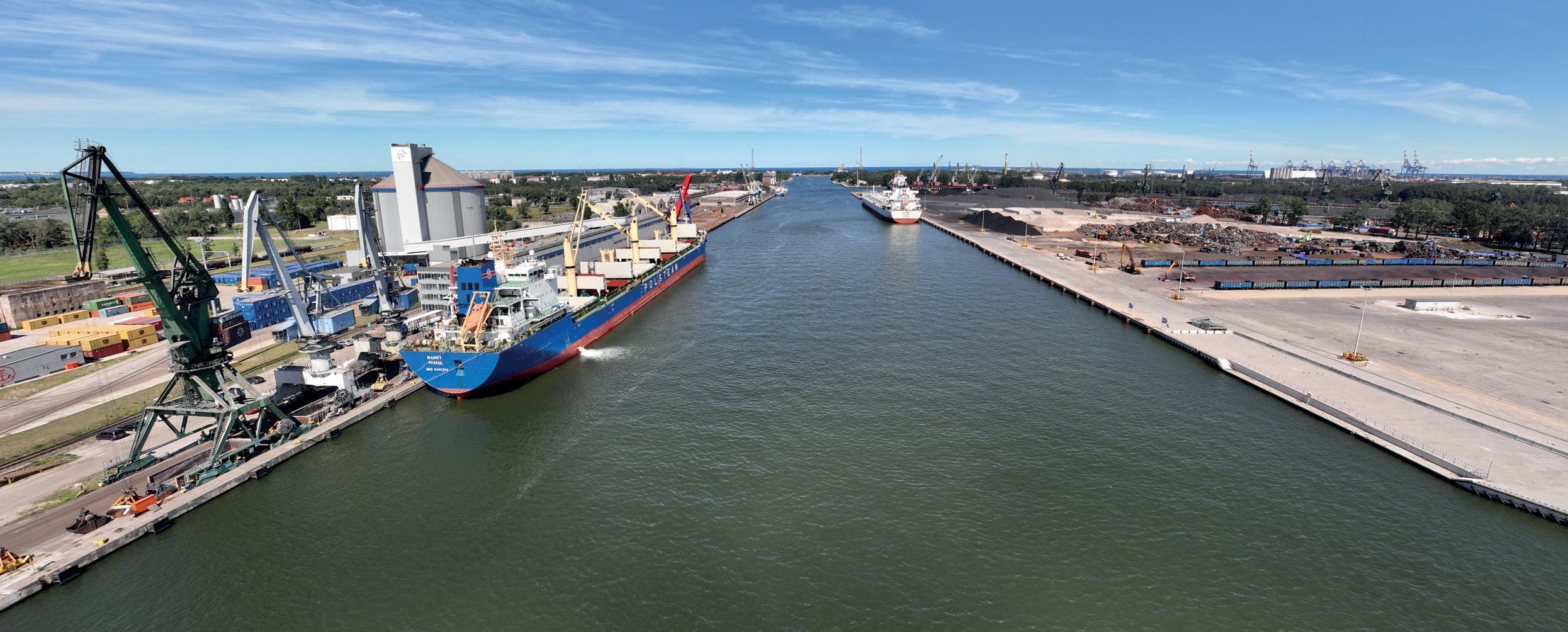
At the European Parliament's Transport Committee meeting in May 2022, Ukrainian Minister of Infrastructure Oleksandr Kubrakov said that 70% of total exports from Ukraine normally had been carried by sea. But the conflict in the Azov-Black Sea basin effectively put any civil maritime activity in the country's waters on hold.
With supply chains heavily disrupted, re-routing goods to road and rail clearly was insufficient. This situation exacerbated congestion at terminals, putting maritime logistics and connectivity, as well as maritime safety and security, at risk.
“The Ukrainian war has had a big impact on global trade,” said Lennart Verstappen, corporate communication advisor at Port of Antwerp-Bruges.
In 2022, the conflict caused a decrease in Russia-related container traffic by 59%, according to the port. On the other hand, sanctions against Russia and the energy crisis considerably changed the energy landscape and flows in Europe, which translated into strong growth in bulk cargo, according to the port.
For instance, dry bulk throughput climbed by 13.8% in 2022. Coal throughput, in particular, experienced a sharp 210% increase due to the substantial rise in demand for coal-powered generation, Verstappen noted.
He confirmed, however, that fertilisers declined by 18.3% due in part to sanctions on Russia and significantly higher fertiliser prices. The liquid bulk segment grew 10%, mainly due to a 61.3% increase in demand for LNG as an alternative to natural gas via pipelines from Russia.
“Of course, there have been changes in cargo flows. Much of the Russian cargo volumes were exported through Baltic ports. On the other side, we see ports such as the Dutch-Flemish North Sea Port where an important share of cargo was also Russia- or
It would be wrong to say that all European seaports felt the sting of the Ukrainian crisis as one, noted Ryckbost. While some ports clearly saw their business hurt, others were not affected or even benefited from the change in cargo flows.
“The picture is different for every port. For instance, North Sea Port used to have a lot of business with Russia and Ukraine, so they lost this business, but successfully tried to compensate with cargo from other regions,” Ryckbost said.
“European seaports showed outstanding resilience, as even the ports that experienced a huge impact eventually managed to compensate for the losses with new clients and cargo volumes.”
Meeting Europe’s energy needs
According to Ryckbost, the European energy crisis was one of the key consequences of the Ukraine conflict. A high dependence on Russian fossil fuels put European energy security on the line. In the wake of sanctions, the urgent need for achieving greater energy independence from Russia came to the fore.
“On average, 40% of commodities handled by European ports are energy sources, so this is a segment of utmost importance for the industry,” Ryckbost said.
Western efforts to wean itself off Russian fossil fuels, coupled with a blow to the Russia-to-Europe gas pipeline Nord Stream 2 in 2022, resulted in a dramatic drop in European natural gas pipeline imports.
In 2022, Europe was hit with an energy crunch, resulting in a nearly fivefold rise in electricity prices, which triggered a cost-of-living crisis across the trade bloc. In this context, seaports are faced with a challenge to help Europe meet its energy needs.
“European seaports heavily invested in LNG terminals,” said Ryckbost, citing the Port of Barcelona as an example.
26
Ukraine-related,” said Isabelle Ryckbost, ESPO secretary general.
Pictured: Port of Gdansk in Poland saw an increase in transhipments of liquid fuels and coal after sanctions affected the trade in Russian raw materials
In Barcelona, the commissioning in February 2023 of the 5,000 m3 capacity Haugesund Knutsen from the Knutsen Scale Gas company, commercially managed by Shell, made it possible to significantly increase bunkering services to vessels.
During 2023, the Port of Barcelona performed 199 LNG bunkering operations for ships, for a total of 143,000 m3, which is twice that of the last reference year, 2021.
Many other European ports have also experienced a surge in imports of energy sources.
Due to sanctions on Russian raw materials, the Port of Gdansk achieved record transhipments of liquid fuels and coal. In 2022, liquid fuels reached 25 million tons, an increase of 36% compared to 2021.
“Before the war, coal arrived in Poland by train from across the eastern border. This route was closed after Russia’s aggression against Ukraine and the sanctions that covered Russian raw materials,” Urbanowicz added.
Naftoport, which is the only offshore crude oil transhipment terminal in Poland as well as one of the largest transhipment terminals on the Baltic Sea, has become a key company that ensures the diversification of crude oil supplies to Poland. An even further increase was recorded in 2023, as transhipments of crude oil and oil products increased by 47% to 37.6 million tons.
“The Naftoport terminal now forms an oil hub for the region. In fact, the refining needs of both Poland and our closest neighbours are secured thanks to the Gdansk fuel terminal. A part of this cargo also involves deliveries to German refineries,” Urbanowicz added.
Fight for calories
A lack of Ukrainian grain on the global market was another important consequence of the unfortunate events happening in Poland.
“Ukraine and Russia together typically export nearly 12% of food calories globally. Before the war, Ukraine exported more than 90% of its agricultural products, around 6 million tonnes per month, via the Black Sea. Alternative routes by road and rail only provide a partial solution,” the European Parliament warned in a 2022 statement.
Urbanowicz noted that Polish ports took on the burden of accepting Ukrainian cargoes.
“The [European] ports in the Black Sea, like the port of Constanta, in Romania, have been performing quite well in the past few years since they are the only viable way to export Ukrainian agricultural commodities,” Ryckbost said, adding that everything comes with a price, and the European Black Sea ports saw a slump in tourism-related traffic, which is yet to bounce back.
In March 2024, the Romanian government gave a green light for a significant infrastructure project aimed at enhancing the southern sector of Constanta Port on the Black Sea.
Transport Minister Sorin Grindeanu revealed that the project is estimated to cost a total of around €1.12 billion (US$1.22 billion)
in the development of new terminals, access roads and utilities in the region. Although the official doesn’t attribute this directly to the rise in Ukrainian cargo volumes, this factor certainly played its role.
The Port of Gdansk was one of the European seaports to react quickly to the changes in the supply chains. According to Urbanowicz, the port had to urgently prepare additional storage and warehousing space to handle the growing cargo volumes, including grains, iron ore, steel products and sunflower oil as well as other Ukrainian exports.
“Furthermore, since around 70% of the grain transport to the Port of Gdansk is handled by truck, we made additional buffer points for them. There are currently approximately 1,000 parking spaces,” Urbanowicz said.
“We handled nearly 81 million tons, which is 19% more than in 2022 when it was 68.2 million tons.”
Ryckbost agreed that the Polish ports had quite a good year, also indicating that some Western ports saw solid numbers last year. In Western Europe, for example, there was a surge in cruise traffic, possibly related to security problems in the Black Sea.
“These things are all really interconnected,” Ryckbost noted.
A turbulent world
According to Ryckbost, the Ukrainian conflict can be a harbinger of even bigger challenges as the world gets more divided and turbulent. The Red Sea crisis, which also took a toll on some European seaport operations since 2023, showed how fragile the existing trade flows could be.
“There are a lot of potential game-changers on the table,” Ryckbost said, voicing concerns, among other things, about the impact of the US Inflation Reduction Act, which lures substantial investments to the country and, from a certain angle, can be perceived as a risk factor for energy-intensive European businesses.
“This indirectly can also lead to some changes in cargo volumes going through the European ports,” Ryckbost added.
The global geopolitical situation is an increasingly significant factor that affects European seaports.
“For years, Europe has been looking into ways to facilitate trade between the countries, such as lifting administrative barriers and signing free trade agreements, but what we see now is that the world becomes more polarised instead,” said Ryckbost. :
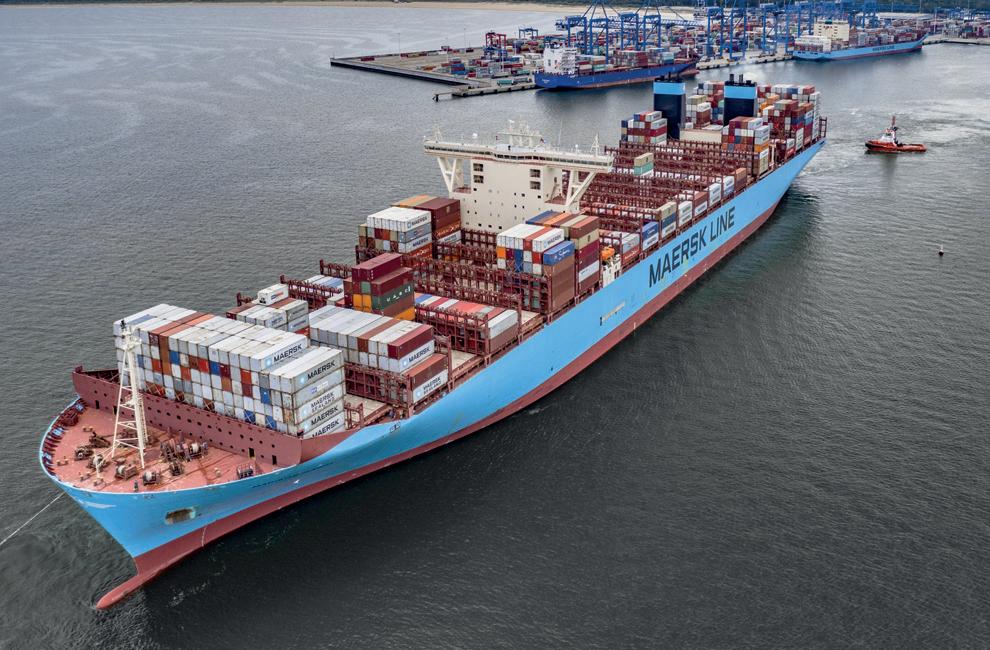
27
Pictured: DCT Gdansk is the largest container terminal in the Baltic Sea in terms of its cargo-handling volumes

28
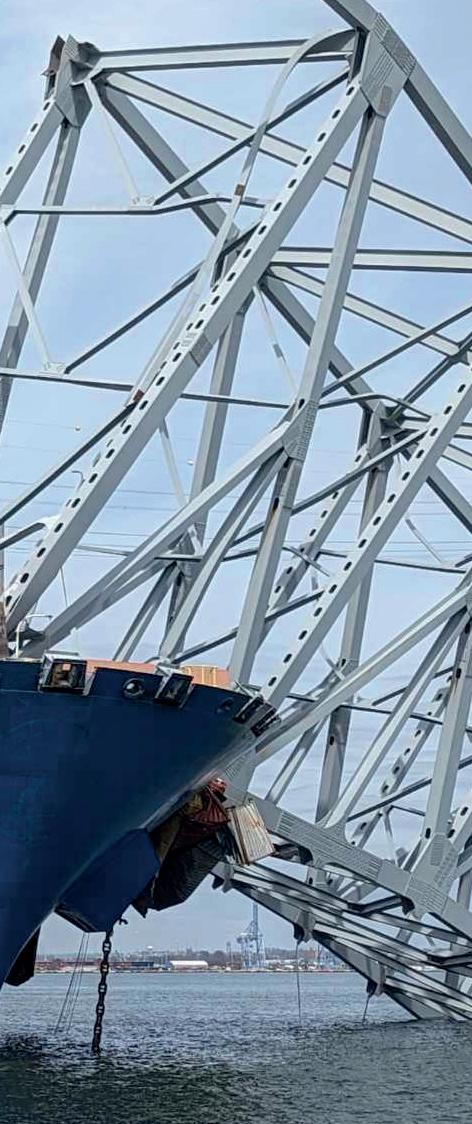 LOOKOUT FRANCIS SCOTT KEY BRIDGE
LOOKOUT FRANCIS SCOTT KEY BRIDGE
Baltimore bridge collapse
The image shows the damage after the collision of the container ship MV Dali with the Francis Scott Key Bridge in Baltimore on 26 March. The incident left six construction workers dead who were working on the bridge at the time and two others injured after the structure collapsed into the waters below. The bridge spanned the lower Patapsco River and outer Port of Baltimore in Maryland.
The cargo vessel left the port in the early hours of the morning en route to Colombo, Sri Lanka. At around 1.30 a.m., just minutes into the month-long voyage, Dali lost power and crashed into one of the supports of the bridge, resulting in a catastrophic structural failure. All crew members — who were able to broadcast a mayday call before impact — were accounted for, as well as two pilots, and there were no reports of injuries on the vessel itself.
The bridge collapse temporarily shut much of the Port of Baltimore, idling 15,000 port workers and impacting nearby businesses. While investigations into what happened are ongoing, legal proceedings have already stirred into action, with the FBI also launching a criminal probe. According to media reports, this will at least partly focus on the ship and if its crew left port knowing it had serious problems with its systems. The City of Baltimore has hired attorneys to pursue action against the ship’s owner, Grace Ocean Private Limited, its manager Synergy Marine of Singapore, and its charterer, Maersk.
Engineers plan to open a limited access channel 280 feet wide and 35 feet deep imminently for the restoration of safe navigation in and out of the Port of Baltimore. This would support one-way traffic in and out of the port for barge container services and some roll on/roll off vessels that move automobiles and farm equipment to and from the port. It follows the establishment of a temporary alternative channel near Sollers Point on 1 April.
Engineers are aiming to reopen the permanent, 700-foot-wide by 50-foot-deep federal navigation channel by the end of May, restoring port access to normal capacity. Maryland’s Port of Baltimore ranks first among US ports for volume of autos and light trucks, roll on/roll off heavy farm and construction machinery, imported sugar and imported gypsum and ninth overall among the major US ports for overseas cargo. :
29
Pictured: The MV Dali in the tangled wreckage of the Francis Scott Key Bridge Credit: DVIDS
PERSPECTIVE ENERGY HUBS
How the decarbonisation drive is forcing ports and terminals to preempt change and reinvent themselves as energy hubs for an array of established and future fuels
FELICITY LANDON
Ports have always been in the ‘fallout business’, I was once told. They cannot control the ups and downs of the economy, trade or cargo, but merely anticipate, respond to and handle the demands of customers (or suffer the consequences of a lack of demand).
Decarbonisation clearly challenges that mantra. Ports cannot afford to be passive; as the energy transition gathers pace, and pressure from above and below ensures that this pace cannot slow, the role of ports as energy hubs is being reinvented. Ports must be proactive. Decarbonisation brings new opportunities but there are also significant challenges and complexities around the new fuels to be handled, stored and, in some cases, produced – in terms of technology, infrastructure, space, safety, training and retaining the all-important ‘licence to operate’ based on keeping local communities on side.
Port operators frequently talk about ‘collaboration’. When it comes to future fuels, and also handling them alongside the demands of other cargo operations, it’s not an overused word, but a necessity.
Many ports are already established as ‘traditional’ energy hubs – supporting the offshore oil and gas industry, handling coal imports and exports, providing the space and infrastructure for crude oil to be piped onshore to port-side refineries or for aviation fuel to be piped direct to airports.
More recently, ports have played a central role in offshore wind power, providing the assembly, construction and O&M bases required for offshore wind developments.
The future energy landscape will have
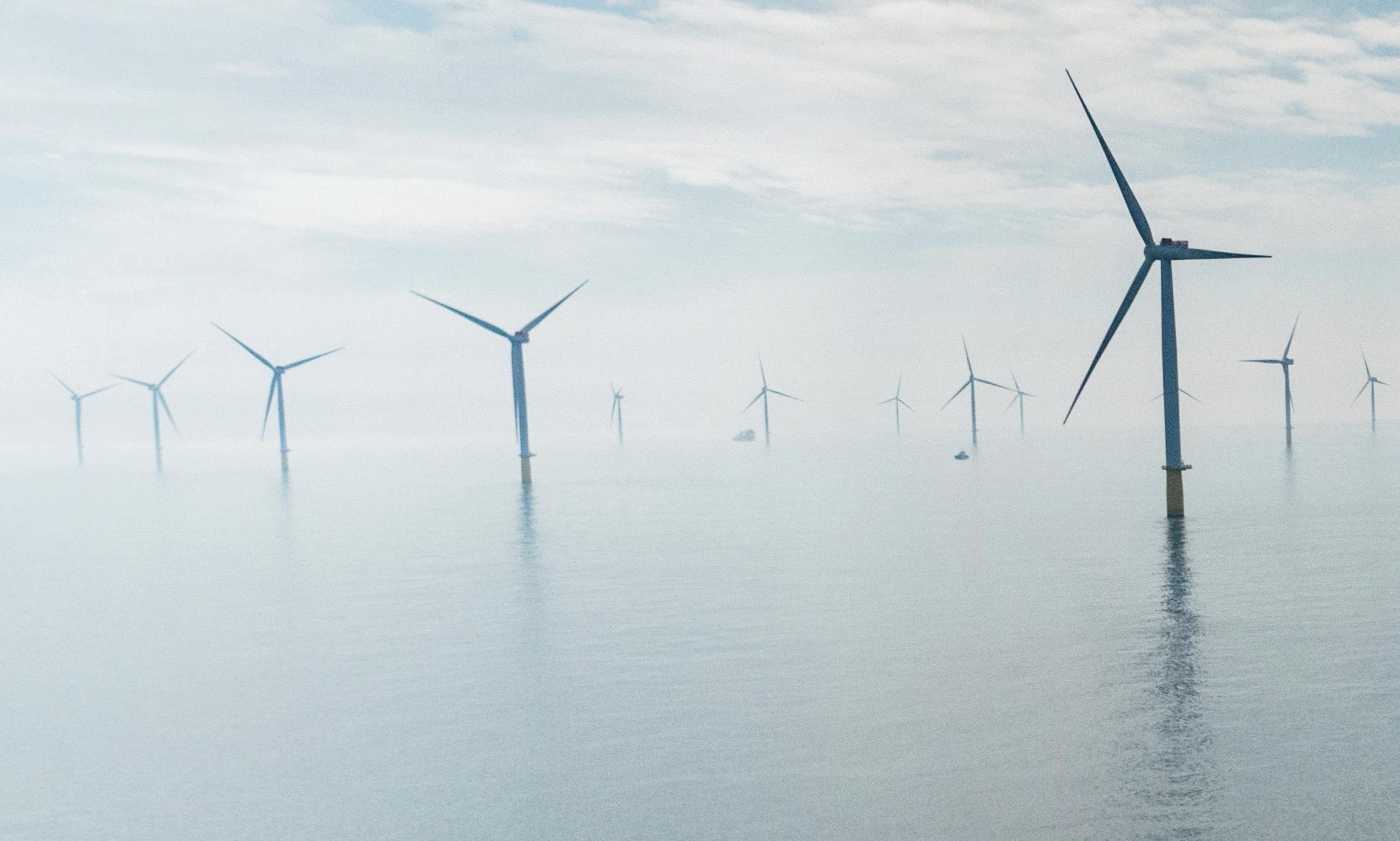
Concentration of power
a major impact on ports, which will have to change to facilitate future shipping and energy flows, according to Patrick Walison, senior consultant for maritime strategy and economics at Royal HaskoningDHV. For example, he said, more than 100m tonnes of green hydrogen and 50m tonnes of blue hydrogen will be traded internationally each year by the mid-century, by pipeline or ship. “The role of ports will change from a spatial, infrastructure, commercial and economic perspective,” he said.
A particular pressure will be land use trade-off. Johan-Paul Verschuure, director of Rebel Ports & Logistics, noted: “In a lot of ports, port area will be very sparse. If you import the same amount of energy via ammonia or hydrogen, it will need much more port space for the same energy. There will be more squeeze on existing terminals.”
And it’s not all or nothing. Walison added: “There will be a transition where you have to do both [traditional and future fuels], and that will create tension in spatial planning. Offshore wind needs
Pictured: The ports and maritime sector must navigate a new era in energy
more space. Working with ammonia or methanol means all kinds of safety rules and space issues as well. And alongside this there is the complexity of investment decisions and backing.”
Ports must ensure they have the right technical capabilities in place, considering project distance, expertise and experience and port cost. “Also, ports have to make sure they don’t have stranded assets in two years’ time,” said Walison.
Green corridors are springing up, or at least being proposed, and the pressure is on ports to ensure that the necessary electricity or ‘future fuel’ is available to make them work. That isn’t always easy. During London International Shipping Week 2023, Doug Bannister, chief executive of the Port of Dover, discussed the high-volume green corridor being proposed by Dover, Calais and Dunkirk, together with DFDS – and highlighted the obstacles faced by the UK port.
“There is an option here that all the ferries are electric. The problem is, we don’t have much power,” he said.
“Predicted demand would be 160MW. Right now, we have access to 8MW. They [ferry operators] are not going to invest in electric ferries unless there is power in
30

the port, and we are not going to invest in electricity in the port unless there are electric ferries.”
While Calais has a massive electricity infrastructure behind the port, and Dunkirk has a nuclear power station, the UK’s National Grid infrastructure requires a tremendous amount of investment, he said. “But from the port perspective, we go on the list behind the garage, the supermarket, the shopping mall and the hotel operator.”
Luc Arnouts, vice president international relations and networks at the Port of Antwerp-Bruges, has emphasised the port authority’s determination to take responsibility for decarbonisation – not only of port operations but also to support steel, cement and other industries in this mission.
At the Port of Zeebrugge, the HyoffWind consortium is building a plant to convert renewable energy into hydrogen, while in Antwerp, a hydrogen plant is being built in the NextGen District. Both are due to produce green hydrogen from next year. The port authority is also committed to the import of green hydrogen from countries where there is a surplus of wind and solar, such as Chile, Oman, Namibia, Egypt or Brazil, and is part of a hydrogen import coalition focusing on specific projects for the production, transport and storage of hydrogen.
Among recent announcements, Ulsan Port Authority has signed an MoU with
Pacific Environment to decarbonise ports in the Asia-Pacific region and create green shipping routes, promoting the supply of new fuels such as green methanol and ammonia.
The Port of Bilbao is developing an intra-European renewable hydrogen corridor with the Port of Amsterdam, with Duisburg also in the chain. Amsterdam’s area manager, Maurice Delattre, said: “We want to have an end-to-end value chain for green hydrogen and its derivatives. Our target is to have the pipelines in place by 2026 and import at least 1m tonnes of green hydrogen annually. This is a realistic target but it really comes down to project cooperation; are we able to take some risk from terminals, producers and end users to move towards those products? If we can take that risk away, for example, tank storage companies would allocate capacity to sustainable aviation fuels.”
suppliers, service providers and manufacturing companies of systems and technical equipment for sustainable energy sources.”
Ports need clarity from policymakers and, in many cases, funding or some kind of financial support. In a recent position paper, the Port of Rotterdam called for any new European port strategy “to broadly address the competitiveness of the ports by giving consideration to the important role of the ports in the energy and raw materials transition”.
The document noted: “Fit for 55 and REPowerEU both set a clear path for sustainability in Europe. Now the focus is on implementation. For a successful energy and raw materials transition, over the coming years we need stable policy and strong incentives to transition to renewable energy and a circular economy. There are several challenges currently impeding the transition from fossil fuels to renewable energy, such as grid congestion and issues with permitting processes. To accomplish this transition, it is essential that there are predictable and competitive market conditions to enable investments in sustainable industry, as well as sufficient raw materials available.”
‘‘
There will be a transition where you have to do both [traditional and future fuels], and that will create tension in spatial planning
PATRICK WALISON, senior consultant for maritime strategy and economics, Royal HaskoningDHV
None of the above is to suggest that hydrocarbons have just ‘gone away’. In its first quarter 2024 results, Vopak reported a 3% increase in year-onyear net profits to €106 million and noted that oil and gas markets were strong, driven by a higher demand for energy and rerouting of supply chains.
The Port of Hamburg has launched its Sustainable Energy Hub initiative and says companies operating in the field of sustainable energy sources will be prioritised: “In addition to storage, processing and refining, this also includes
“We are committed to grow our business in industrial and gas infrastructure and accelerate towards new energies and sustainable feedstocks,” Vopak reported, citing good progress in developing a greenfield LPG export terminal project in Western Canada, and the acquisition of a new terminal in Mangalore. It has also commissioned repurposed infrastructure in Singapore for low-carbon transport fuels. :
31
PERSPECTIVE ENERGY TRANSITION
Preparing for a sustainable future begins with action today
KARI-PEKKA LAAKSONEN Group CEO, Samskip
Two hydrogen-powered vessels will join the Samskip fleet in the near future. The first of the two vessels is due to be completed by 2026. The 135-metre-long vessels, being built at the Cochin Shipyard in India, will each be powered by 3.2MW hydrogen fuel cells, with the potential to reduce carbon emissions per vessel by 25,000 tonnes a year. Once commissioned, they will be among the first zero emission short sea container vessels in the world, using green hydrogen as fuel – achieving zero emission operations in port as well, by plugging into green shore power wherever possible.
Samskip obviously made headlines when we placed this order last year but from our perspective, the arrival of these two vessels will represent just one piece (albeit a significant piece) in our highly ambitious and pioneering decarbonisation and sustainability jigsaw.
Sustainable vision
For the past decade we have been acting on and executing a plan which is sustainable and advantageous for all of us. Perhaps because of our Icelandic roots, sustainability is in our DNA – it is at the centre of our strategic pillars and brand values. We practise sustainability and we push for change. Our vision is “Making green logistics easy”; our mission is “To deliver the most reliable logistics solutions, focused on sustainability, customer experience and operational excellence”.
There can be a tendency in shipping to “innovate second” – holding back and letting others take the risk. Certainly, it’s
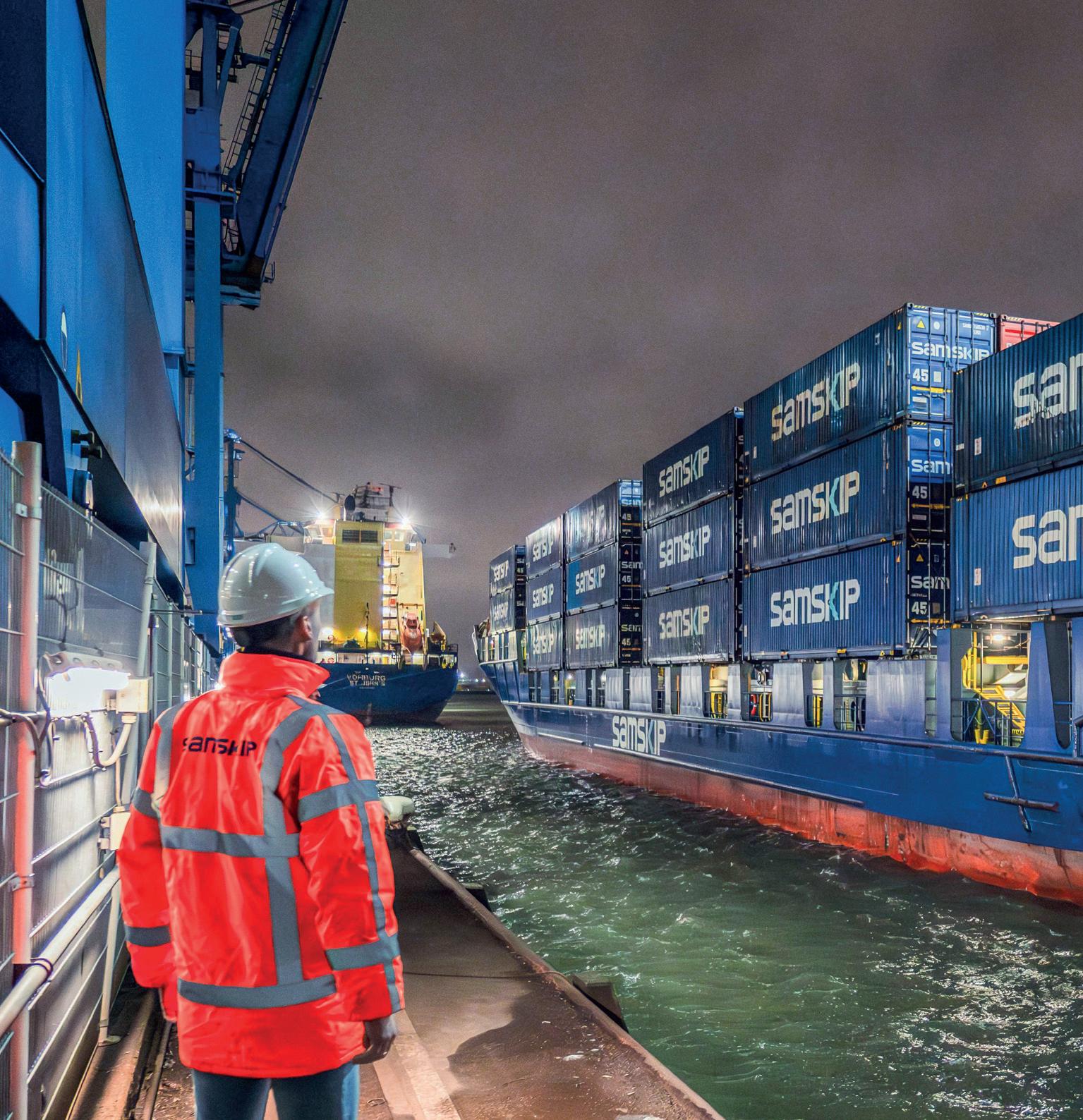
true that shipowners considering future fuels are having to make investment decisions that will have a long-lasting impact for the next 30 years, so we do really have to know our technologies and there has to be an element of risk.
What’s the value of being in front with innovation? Is it better to be second? Our answer to that is clear. At some point, you have to adjust your thinking. You won’t get change unless there are companies who are front runners.
We believe that preparing for a sustainable future begins with action today. Sustainability isn’t just a trend or hype – it must be a guiding principle. The choices we make today are about saving the world for tomorrow. Samskip has embarked on a journey in sustainable
innovation that will define the future of logistics.
We must recognise that focusing only on “being a logistics services provider” is no longer enough for our customers. In today’s world, we must take responsibility for the wellbeing of our customers, the wellbeing of society and the wellbeing of our planet. Leading by example and learning by doing is a good model to follow.
We are excited about the new vessels being built but recognise that not everything has to be new and shiny –contributing to decarbonisation is more fundamental than that. An integrated, optimised multimodal network is a good starting point, already by far the most sustainable way of transporting goods.
For example, moving cargo from Venice to London via multimodal transport generates 524 kgs of CO2, compared with 1,463 kgs from straight road transport.
32
Pictured: Samskip is gearing up for delivery of two new hydrogen-powered vessels
Photo: Samskip
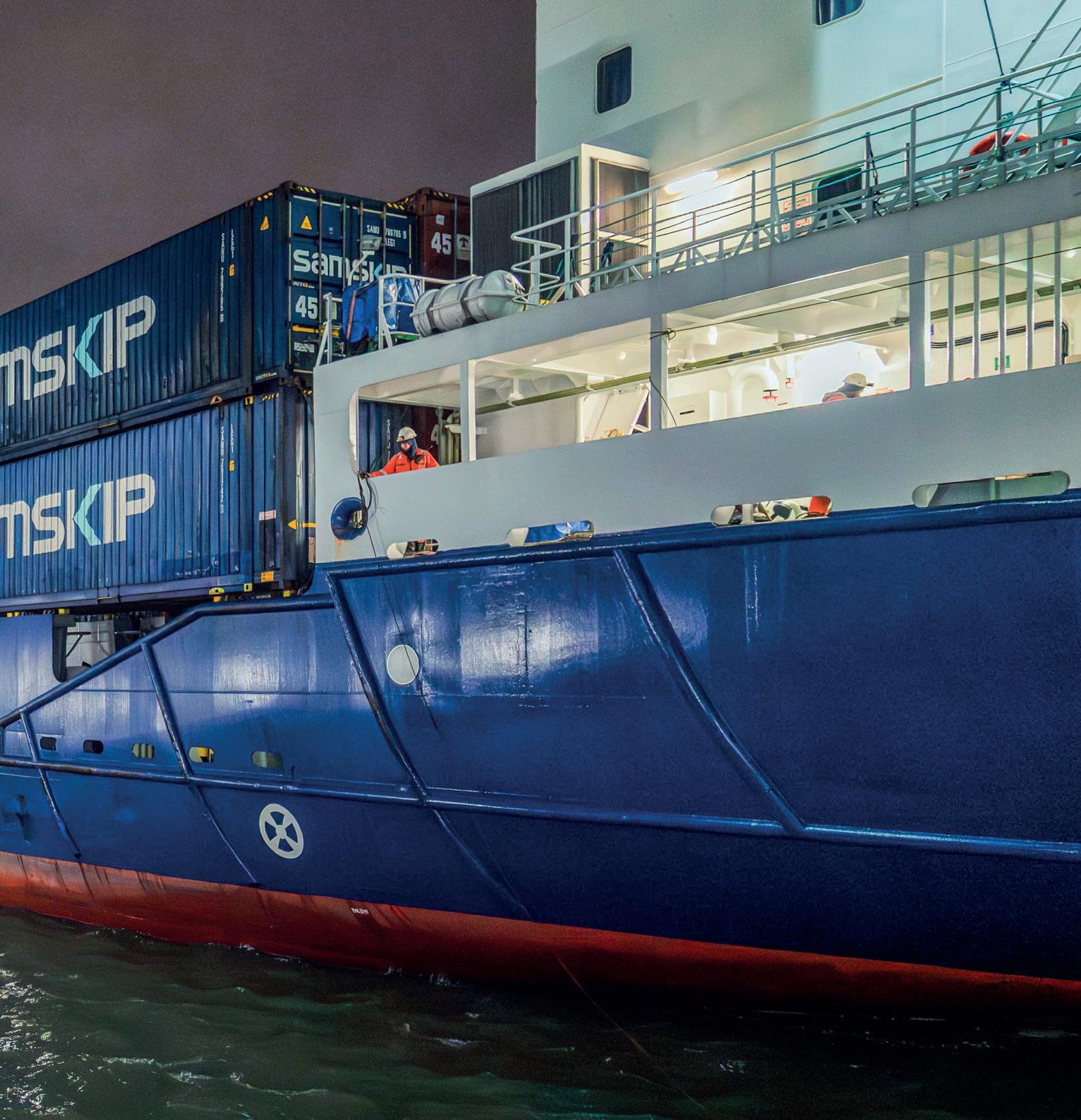
However, while the European Union’s Emissions Trading System (ETS) has been applicable to shipping from the start of 2024, there is no EU ETS for road transport. That creates a very un-level playing field. There are companies like ours that are investing heavily in the future, changing the technology, being front runners. That is very costly. But at the same time, we have to pay ETS fees or penalties on top of our operating costs, so we have a double burden being a front runner. There is clearly a danger that these factors are hindering the green transition and slowing down the transition to green energy usage.
As for Samskip’s sustainability vision and vessel carbon reduction roadmap, we are not just talking about 2030 or 2040 targets – we are talking about the next couple of years’ targets. Yes, we are mostly concentrating on what’s coming that’s new, but we can all also look at
what’s happening today. Short-term gains must be made in parallel with longer-term aspirations and plans. Examples included burning biofuels, plugging into shore power and installing carbon capture technology.
Biofuels
The Samskip Innovator and Samskip Endeavour have been running on biofuels between the UK and the Netherlands, cutting CO2 by 90%, and now the Value Maritime Filtree gas cleaning solution has been installed on the two vessels. For ships running on conventional marine fuels, the Filtree system captures 30% or more of CO2 emissions, providing owners with a direct response to GHG restrictions coming our way.
Accountability and transparency are also key. Every year we are pleased not only to achieve more but also to report that to our stakeholders and others. We
hold a regular Sustainability Day to share ambitions and achievements. In our Compass 2030 we detail our commitments and our actions around climate change, pollution, biodiversity, resource use and the circular economy, social and economic inclusion, human and labour rights, employee engagement and development, health, safety and security, and responsible business practices.
We continue to communicate actively with our partners – customers, suppliers and legislators – in our decarbonisation mission. The only way forward is to collaborate and make this thing work together. Indeed, our green hydrogen vessels are being built with the support of the Norwegian government’s green funding programme aimed at emissionfree transport solutions (and we achieved a low-carbon steel-cutting ceremony in India by sharing the event online!).
To those who are content to hold back and wait for others before following, I would say this: Whether you act or just don’t do anything, you will be hit by the charges or regulations.
We need to accelerate the greener solutions, we need a level playing field, and we need more funding – not just subsidies and grants in capex (hardware such as ships and infrastructure) but also in opex (sustainable fuels), with EU ETS capital re-injected into the shipping Industry in order for the new sustainable fuels to reach the same price levels as fossil fuels.
Clean transport opposed to dirty GHG/ CO2 emitting transport requires all kinds of collaboration and support from the industry, financial institutions and clients. We need to make greener shipping and transport competitive, and we need to make this change happen in an even shorter period of time than is happening, as 2030 is just around the corner.
In summary, there are many innovations and initiatives we can do together to drive decarbonisation forward, from nice fancy things like new vessels to many things we can do with our daily lives and current operating models. And finally, it’s always worth remembering: the greenest energy is the energy that we save. :
33

visit: greenport.com/congress tel: +44 1329 825 335 email: congress@greenport.com
Meet
with over 200 attendees representing port authorities, terminal operators and shipping lines. For more information on attending,
speaking,
the events team:
#GPCongress Date for your diary in 2024 Join the world’s leading conference on balancing environmental challenges with economic demands Le Havre Media Partners: GPC 2024 FP Next Year indd 1 08/04/2024 09:10
and network
sponsoring or
contact


10QUICK

No 1
Favorite app?
Youtube and Spotify. Having spent almost a decade and a half at sea with inconsistent internet access, the ability to play both music and my workout videos offline has been a lifesaver.
No 6
What mythical creature would you like to believe was real?
Mermaid, definitely!
No 2


NAOMI VANDERSTOCKT Director and managing partner, Officers on Watch
No 3
Something unexpected that brings you joy Vanilla. First coffee in the morning. Playing or listening to piano. Working for Officers on Watch: when you get deep into a project and all the puzzle pieces start to fall into place.
An item you cannot live without and why?
My kindle. I love how this pocket-sized item enriches my life with access to an endless library. It gives me peace of mind knowing there is no moment I need to ‘lose’ time.
No 4
What world record do you think you have a shot at beating?
While having been a tenacious and stubborn high achiever for as long as I can remember, I was never one for direct competition with others.
No 5
A quality that impresses you in a business partner?
Serenity when faced with imminent disaster or disappointment. Inspiring others to grow and seeing the unique abilities of different individuals.
No 7
If you could time travel where would you go and what would you do?
Whether it’s time travel or not, I’d go to the sea, probably a desolate beach in French Polynesia, and jump into the water with someone I hold dear.
No 8
Dream dinner date and why?
With the first female President of the United States of America. Why? I’d like to think this shouldn’t be a dream today, but a possible reality.
No 9
Three things you take to a deserted island?
A desalinator, a sharp knife and a friend (or if this doesn’t count as a ‘thing’, then a pair of flint rocks!).
No 10
Best advice ever received?
“You can do so much more than this; this is not your battle. Wake up.” This was said to me not so long ago by a dear friend who helped propel me beyond what I had imagined possible.
35
033 PH No5 Quick10 indd 33 8/25/2022 3:42:50 PM
033 PH No5 Quick10 indd 33 8/25/2022 3:42:50 PM
033 PH No5 Quick10 indd 33 8/25/2022 3:42:50 PM
033 PH No5 Quick10 indd 33 8/25/2022 3:42:50 PM
033 PH No5 Quick10 indd 33 8/25/2022 3:42:50 PM



Fighting Fires
Ijoined Alfred Holt & Company, better known as the Blue Funnel Line, in 1957 as a Cadet. I spent my four years apprenticeship travelling to the Far East and sometimes to Australia. In those days cargo work was break bulk and so ships were in port for long periods (I remember being in Melbourne for 12 days). This of course meant time to go ashore and explore. However, as we were not allowed alcohol on-board, we didn’t usually get past the first bar!
The time passed learning bridgework as well as polishing brass and soojing (cleaning duties). Tickets obtained when suddenly Blue Funnel got together with Elder Dempsters – a takeover if you were Blue Funnel a merger if you were Elders – and became Ocean Fleets. Suddenly, I was sailing to West Africa. I then spent time on the training ship and was subsequently appointed to Calchas, which had earlier been the training ship for Blue Funnel.
Whilst in Port Swettenham (now Port Klang) a forklift overturned in No.2 hatch and started a major fire so severe that even with shore assistance we had to abandon ship.
The mate on another ship in Penang developed appendicitis and I flew to Penang to relieve him. We then went to Port Swettenham and a fire started in the forecastle store. The same fire chief came who attended the earlier fire and he was of course delighted to see me! We put the fire out, without his assistance, and sailed on to Australia. Unfortunately, Calchas was declared a wreck and towed to Taiwan to be scrapped. I was then back to West Africa but it was at the time of the cement crisis.
Ocean then joined forces with Wilhelmsen of Norway and Brostroms of Sweden to build eight large ro-ro vessels, which then became Barber Blue Sea. I was put in the office as ro-ro coordination officer and then went out to Nagasaki to stand by the fitting out of one the vessels. I sailed as Chief Officer on her. In all, I sailed on and off on ro-ros for nine years. I was promoted to Master and a year later was given command of one. This did not go down well with several senior Masters but the company decided that I was more familiar with the ro-ros than more senior men. However, a year later Ocean sold the ro-ro vessels to Wilhelmsens and so it was back to conventional cargo ships.

Another year later and Ocean decided to get out of shipping and I had the dubious honour of sailing the last Blue Funnel ship into Liverpool (there was one left but she was bound for London).
I then joined Acomarit which had just acquired three ex-French ro-ro vessels.
CGM did some work before the final purchase but what they did was not helpful to the Acomarit personnel who took over. I don’t think they were familiar with Pielstick engines (the ship had two). Life on board was a disaster with power going off at frequent intervals and then there was an engine room fire which knocked out one of the engines. The stress level was high and we went through four Chief Engineers whilst in Singapore.
All went well for eight years and then one December homeward bound in the English Channel fire broke out in the engine room. The ship’s crew put this out but two secondary fires, one in the boiler flat, destroyed some electric cables which led to short circuits and disabled the emergency fire pump and prevented further active fire fighting. Assistance was called for and I was asked to choose Le Havre or Falmouth as a destination. I chose the latter and we were towed there. When the firemen boarded and opened a door on the main deck the whole accommodation block went up in flames and they had to fight the fire upwards from deck to deck. She was then towed to Rotterdam and the cargo, fortunately undamaged, was discharged.
I served out my time and when my pension was due, I announced my retirement. Despite pleadings from the company to stay I retired and six months later all the British Officers were replaced by East Europeans. A lucky end to a very full life! :
Sadly, shortly after Brian penned his story about his interesting life at sea he passed away peacefully in his sleep. We would like to extend our heartfelt condolences to his daughters Katie and Jude, and all his family. RIP Brian.
Pictured: The distinctive Barber Blue Sea ro-ro design
36
VIEW FROM THE STERN CAPTAIN BRIAN JONES
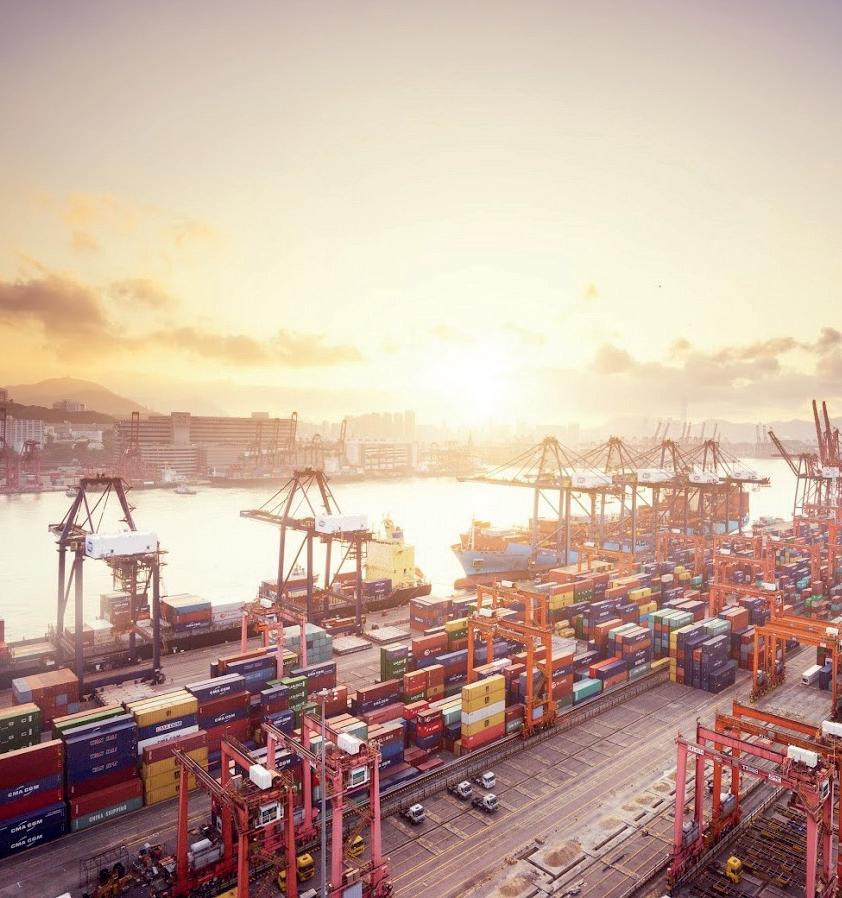



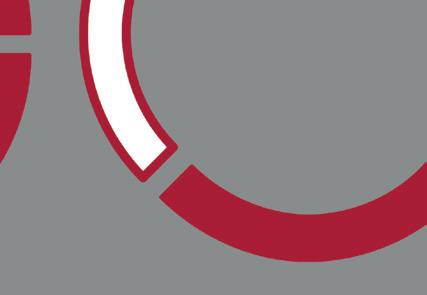

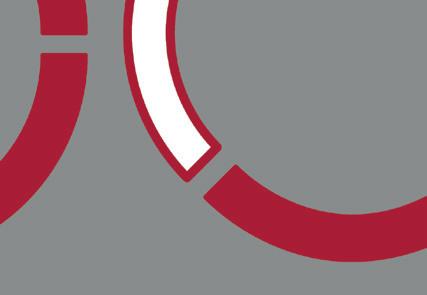

Promote your business to the right audience in the right place at the right time. Engage with our international audience of decision makers and buyers. The Port Strategy Port Strategy’s valued content is dedicated to the international ports and terminals business and is delivered through multiple channels. t: (+44) 1329 825 335 e: sales@portstrategy.com www.portstrategy.com Contact us today MAGAZINE RECIPIENTS DECISION MAKERS PAGEVIEWS PER MONTH 17,80072%36,240 Reach industry professionals with Port Strategy PORTSTRATEGY INSIGHT FOR PORT EXECUTIVES
Welcome to new members
We are pleased to welcome as new members of the association:
Regular members
Chennai Port Authority India 91 892519 3555 secy@chennaiport.gov.in www.chennaiport.gov.in/home
Indranil Hazra, Secretary
Associate members
Arcelor Mittal Shipping United Kingdom 44 07464982126 jacob.raj@arcelormittal.com www.corporate.arcelormittal.com/ Deepak Sachdeva, Head of Global Ports
Amzone International Ltd. U.A.E. 971507697869 info@amzoneinternational.com www.amzoneinternational.com/ Mushtaq Kathawalla, CEO
A1 Auto Transport
U.S.A
1 8882309116 joe@a1autotransport.com www.a1autotransport.com Joe Webster, Marketing Manager
Mr. Marek Grobarczyk
Poland
48 660-807-995 biuro@marekgrobarczyk.home.pl Marek Grobarczyk, Director of the Parliamentary Office MP Marek Grobarczyk
Environmental Ship Index enters a new era
The Environmental Ship Index (ESI) entered a new era in March, with the confirmation of an expanded suite of performance modules to support ports and vessel owners on the journey to decarbonisation and lowering emissions. Coming online in 2026, ESI’s revised and expanded offering will take into account a range of potential emissions, introduce a new GHG methodology, and reward innovation and application of zeroemissions techniques onboard vessels. The transition process to the new suite of ESI modules will take place through 2024 and 2025, with support from ESI’s Board and administrator, as well as IAPH.
As of 1 April, the number of vessels with an ESI score above 20 is at 4,695, whereas the total number of vessels in the ESI database is at 6,409. The average ESI score increased slightly to 31.7. The number of incentive providers now stands at 74.
You can find out more about how to get involved in ESI via our dedicated website, or contact Green Award Foundation, the administrator of this lAPH scheme. :
environmentalshipindex.org admin@environmentalshipindex.org



38 EVENTS TIMELINE 2024-2025 9 JULY (9) Board Meeting IAPH Board Meeting in Tokyo, Japan Iaphworldports.org 7 OCTOBER (7) Board & Council Meetings IAPH Board & Council Meetings, Hamburg, Germany Iaphworldorts.og IAPH INFO
2 JULY (2) Data Collaboration Committee Online meeting focused on data collaboration Iaphworldports.org >≥ 20-30 ≥ 30-40 ≥ 40-50 ≥ 50 0 1000 2000 3000 4000 5000 SHIPS IPs Number of ships Oct 2021 6,933 60 Jan 2022 6,908 61 Apr 2022 6,890 62 Oct 2022 6,896 58 Jan 2023 6,727 60 Apr 2023 6,577 61 Jul 2023 6,686 60 Oct 2023 6,619 60 Apr 2024 6,409 74 Note: Stacked bars show ESI scores above 20 points single bar shows ESI score below 20 points Source: IAPH | ©2023 by S&P Global Market Intelligence Jul 2022 6,981 59 ESI scores: April 2024 Jan 2024 6,350 63
















IAPH’s
new vice president for Central and South America is Vinicius Patel. He explains his role at the Port of Açu and his strategic vision for IAPH in the region
Q: Can you introduce yourself and your priorities at Port of Açu?
A: I am Vinicius Patel, director of port administration at Port of Açu, a new private port inaugurating a new kind of port management and business in Brazil. We have a large area to develop and to operate simultaneously and our team, in a nutshell, is responsible for all port management operations both in water and inland, as well as planning the future developments and masterplan of the port.
I am responsible for ports and institutional relations, all ESG-related matters, from operations safety to port-city relations, operations (VTS, security, emergency response), engineering, innovation, procurement, IT and Reserva Caruara (@reservacaruara), our 40km2 private conservation unit connected to our port.
Our priorities are related to our vision and drive: to be recognised as the port of the energy transition in Brazil and to help the world to reduce its carbon footprint and to showcase the best of Brazil. And we already have great examples: Port of Açu is enabling the sustainable decommissioning industry in Brazil. We have great opportunities to create national solutions for the oil and gas industry with lower cost and lower socio-environmental impact, to attract and ensure that this industry stays in the national territory.
The energy transition in the maritime industry represents a pivotal shift in the port sector worldwide ‘‘
Q: What do you see as the current challenges facing the port sector in Central and South America?
A: The energy transition in the maritime industry represents a pivotal shift in the port sector worldwide. In our region, we must make sure to advocate through IAPH and other stakeholders the establishment of a set of measures and policies to allow a just and equitable transition to the region's countries. Another pressing subject for the region is the climate resilience of our ports. Over the past years we have been experiencing extreme weathers and climate conditions with floods, droughts, rise of sea level, etc. Other topics are also key to improve the resilience of our ports, such as digitalisation, safety, security and innovation.
Q: What are the strategic focus areas for your work as IAPH Central and South American vice president?
A: IAPH represents a strategic platform for dialogue, sharing of good practices and representation of our port sector worldwide. I would like to continue to represent our region globally and contribute to the institution strategy and workplan. Regional representation, within external institutions such as the IMO, is key to the success of regional advocacy to bring to our region the proper measures and to ensure further local development. Regional integration, communications, networking, and alignment improvement are also my priorities in this role.
Q: What kind of cooperation with other IAPH regions and committees are you looking for?
A: Besides local nuances and specific issues, all ports and regions face challenges regarding energy transition and climate change, among others. We believe in sharing knowledge and experience within the IAPH technical committees and working groups to ensure that all good practices and lessons learned will reach our region and port members. That will allow us to leapfrog some issues, as we are dealing with ports and regions that have already gone through this learning curve. :



39 8 OCTOBER (8-10) World Ports Conference Annual IAPH conference in Hamburg, Germany Iaphworldports.org 10 OCTOBER (10) Annual General Meeting IAPH AGM in Hamburg, Germany Iaphworldports.org ? AUTUMN (2025) World Ports Conference 2025 annual IAPH conference, Kobe, Japan Iaphworldports.org
PATEL IAPH vice president for Central
Q&A
VINICIUS
and South America
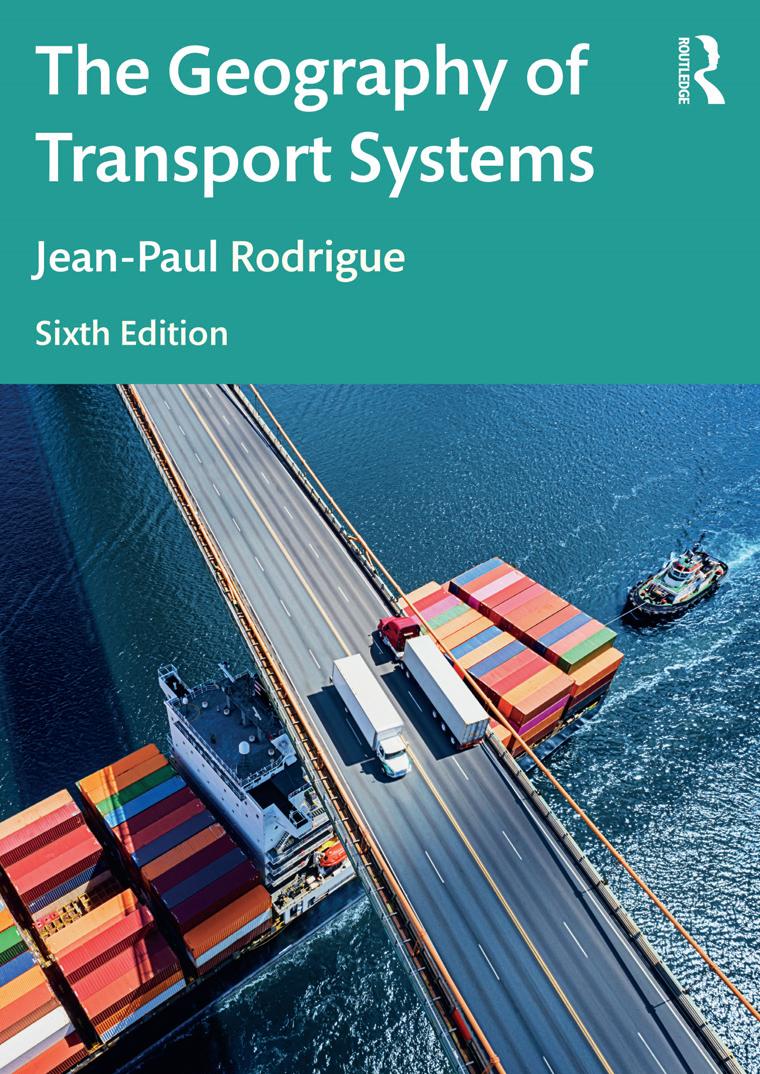






BOOK AUTHOR
Dr JEAN-PAUL RODRIGUE is Professor in the Department of Maritime Business Administration at Texas A&M University, Galveston. The author of seven books, he was a key contributor to the IAPH-World Bank ‘Closing the Gaps’ report on post-pandemic global port infrastructure.
THE REVIEW
The Geography of Transport Systems 6th Edition
JEAN-PAUL RODRIGUE
11111
The Geography of Transport Systems by Dr Jean-Paul Rodrigue has become a staple resource for both students and experts around the world for almost 20 years. First published in 2006, this book is ideal for all those seeking to gain insight into the complexities of modern-day transportation geography, which in essence, explains the movement dynamics of the global economy. It is also an ideal resource for those interested in economic and urban geography, transport planning and engineering.
Much of its contents will resonate with those of us active in the maritime industry, with sections focused on ports and terminals and their integration with other infrastructure. The author’s peer-reviewed paper on port regionalisation became one of the world’s most cited works in maritime
transportation. The book also explores air, land and intermodal transportation. It weaves all these threads together for a picture of the spatial aspects of transportation and how the mobility of passengers and freight is linked with geography, a topical theme given current interest in supply chain dynamics.
In this latest sixth edition (published 30 April, 2024), it has been expanded and revised with new and updated material that reflects some of the challenges and concerns that have affected the maritime and transportation industries over recent years. This includes additional material on information technologies and mobility, e-commerce, transport and the economy, mobility and society, supply chains, security, pandemics, energy and the environment and climate change.
At almost 400 pages, and with more than 100 updated figures and maps
presenting transportation systems at different scales ranging from global to local, it is an accessible and visual guide to what can, at times, be a complex subject. The book provides both a comprehensive and yet approachable introduction to the field, a testimony to the talents and depth of knowledge of its author.
Furthermore, there is a companion website, which contains additional materials such as photographs, maps, figures and PowerPoint presentations, to offer a valuable and extensive up-to-date resource packed with data and insight.
Already widely-acclaimed by students and experts alike, this latest edition continues the high standards set by the original, and reasserts the author’s status in transport geography and his credentials on the impact of maritime transportation on the global economy. :
40
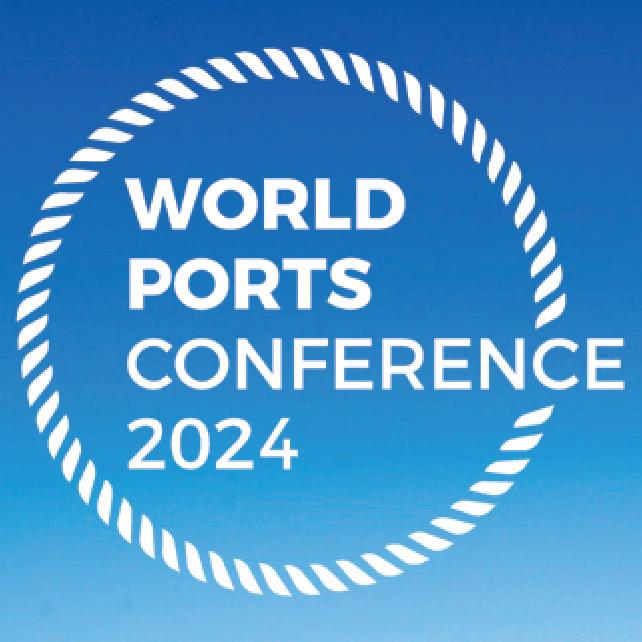
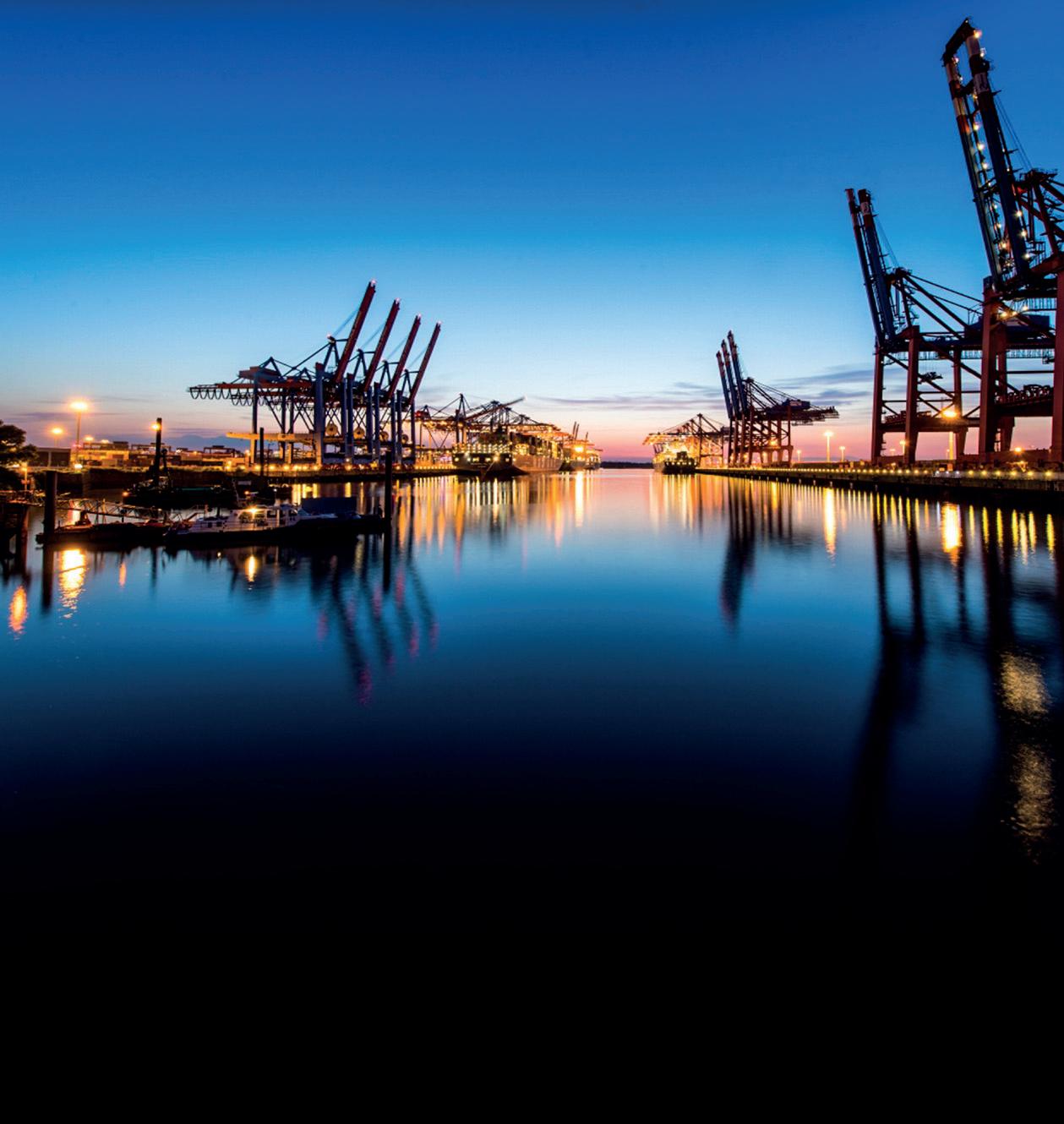
8 – 10 October 2024
Hamburg, Germany
REGISTRATION NOW OPEN
Managing risk - building resilience - unlocking opportunities
2024 will be a pivotal year for ports and their communities. Geopolitical instability is on the rise. Physical and digital security is under threat, at sea and on shore.
Shipowners, supply chain providers and cargo owners must adapt rapidly. The energy transition towards low- and zero-carbon fuels must be balanced against national energy security concerns.
ports – from developing and developed nations – are building secure and sustainable solutions to these shared challenges, in a deeply interconnected world.
©


For more information on attending, sponsoring or speaking contact the events team:
visit: worldportsconference.com
contact: +44 1329 825335 or email: wpc@mercatormedia.com #IAPH2024
Silver sponsors:
Bronze sponsors:
Gold sponsor:
Host sponsor:
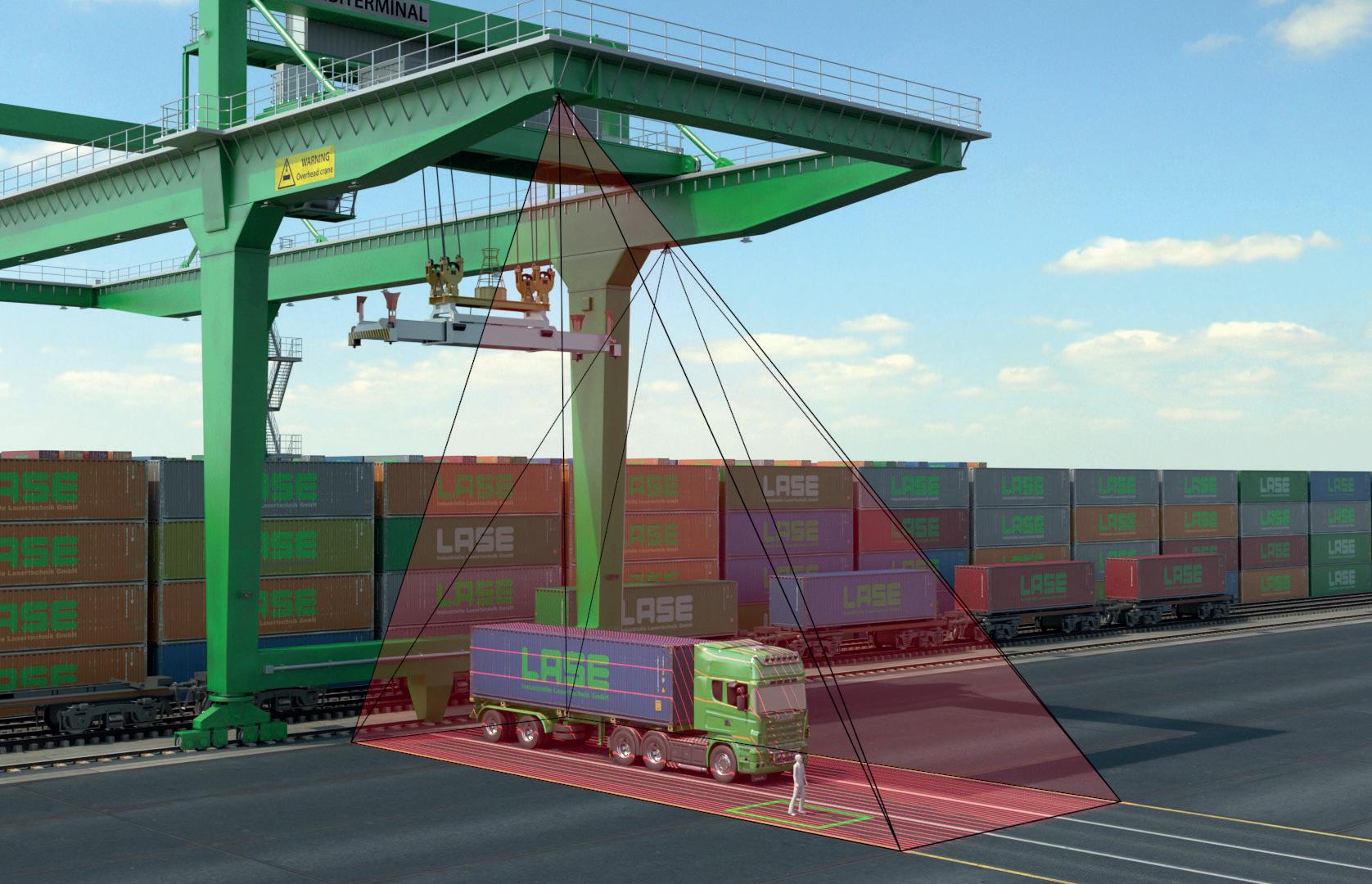




















































































 MARTIN CLARK Editor
MARTIN CLARK Editor

 MIKE MUNDY Editor & Independent Analyst
MIKE MUNDY Editor & Independent Analyst




































































































 MIKE MUNDY Editor & Independent Analyst
MIKE MUNDY Editor & Independent Analyst



































 LOOKOUT FRANCIS SCOTT KEY BRIDGE
LOOKOUT FRANCIS SCOTT KEY BRIDGE


















































